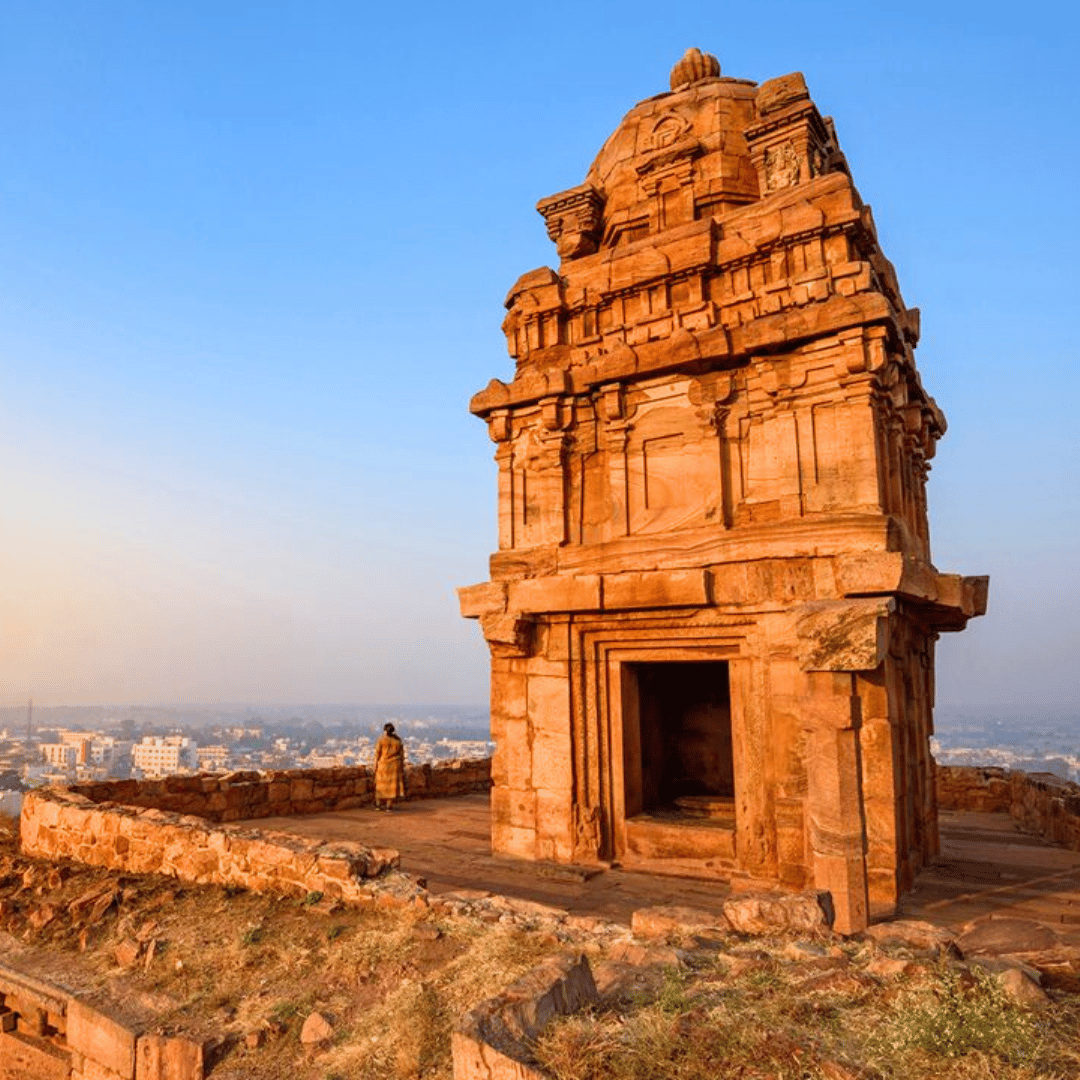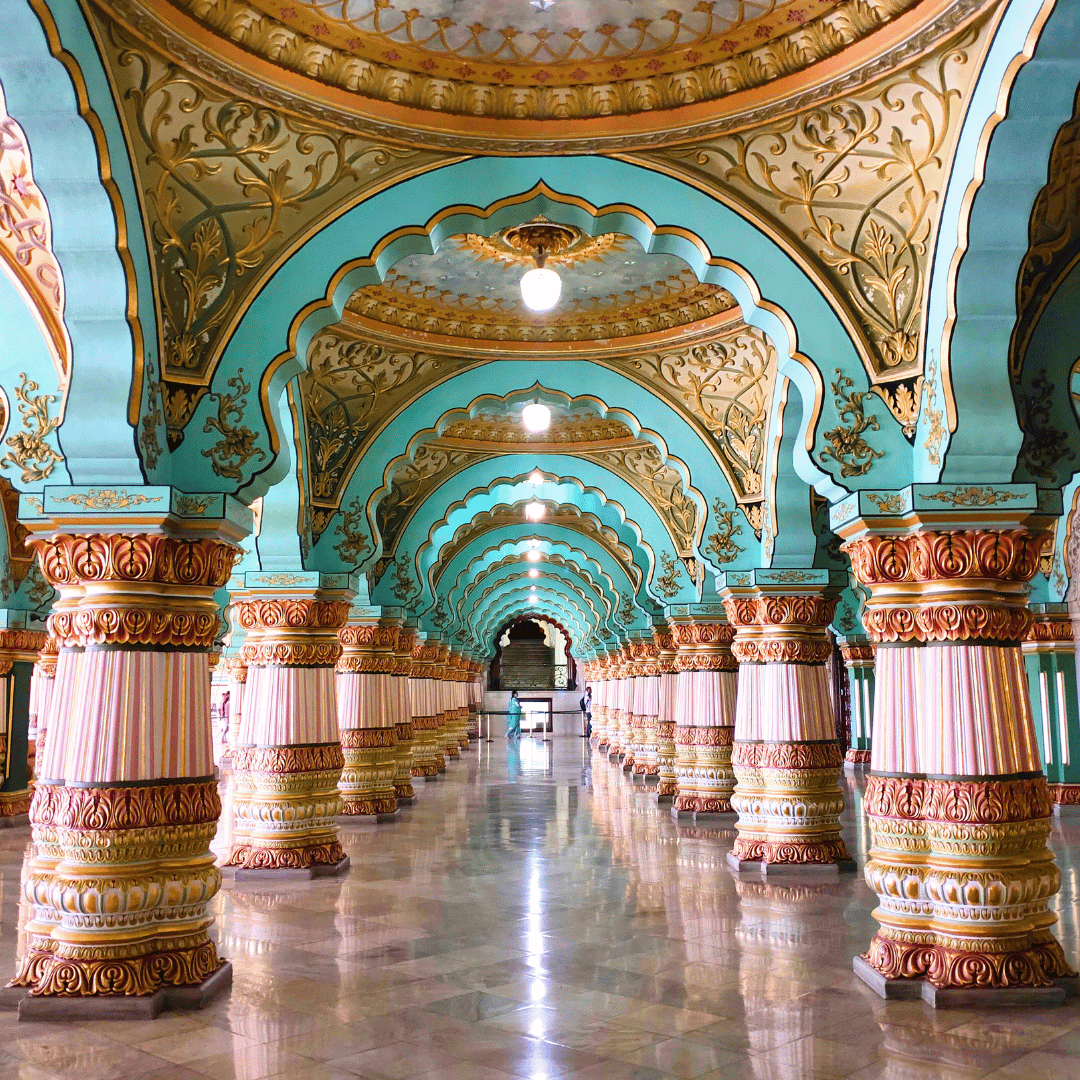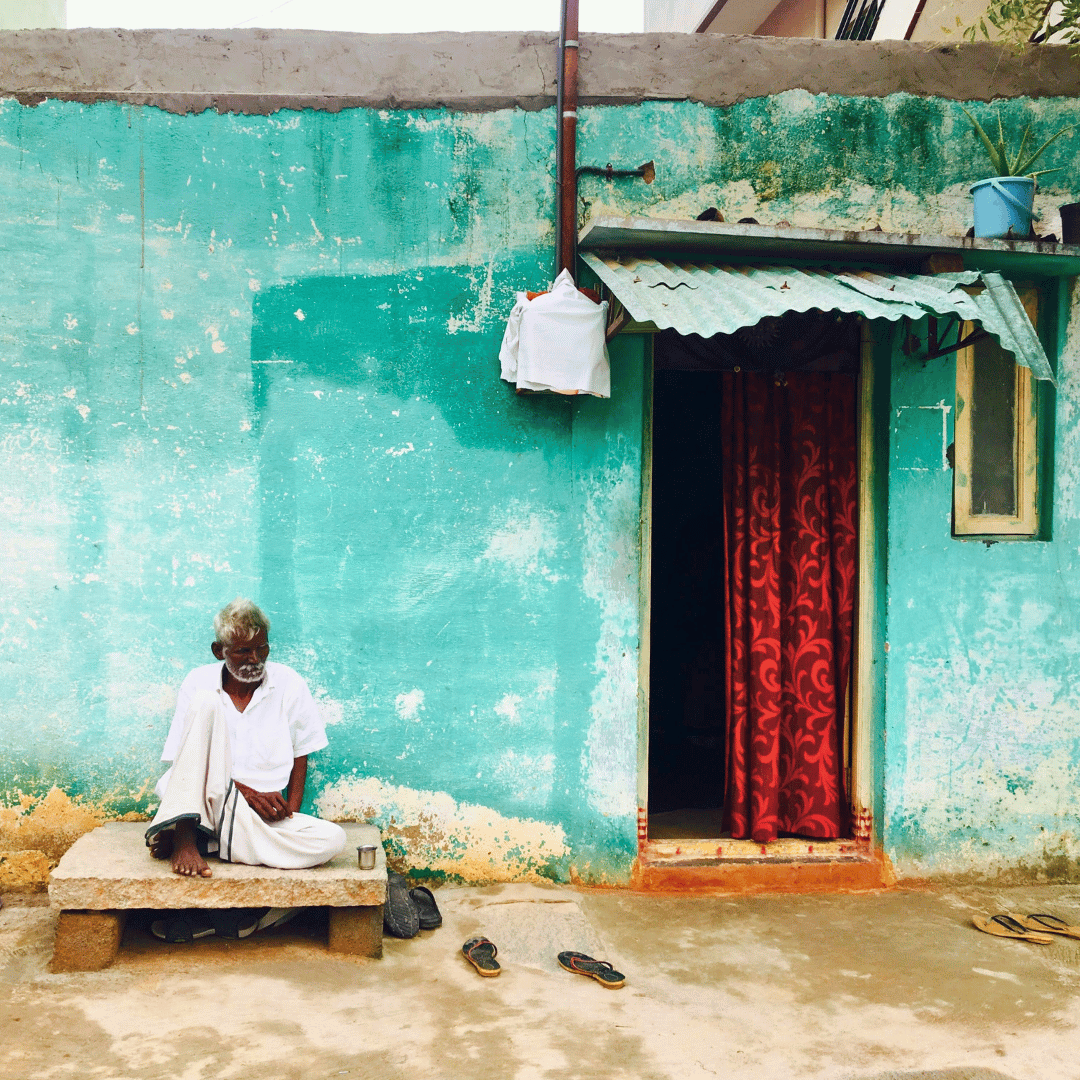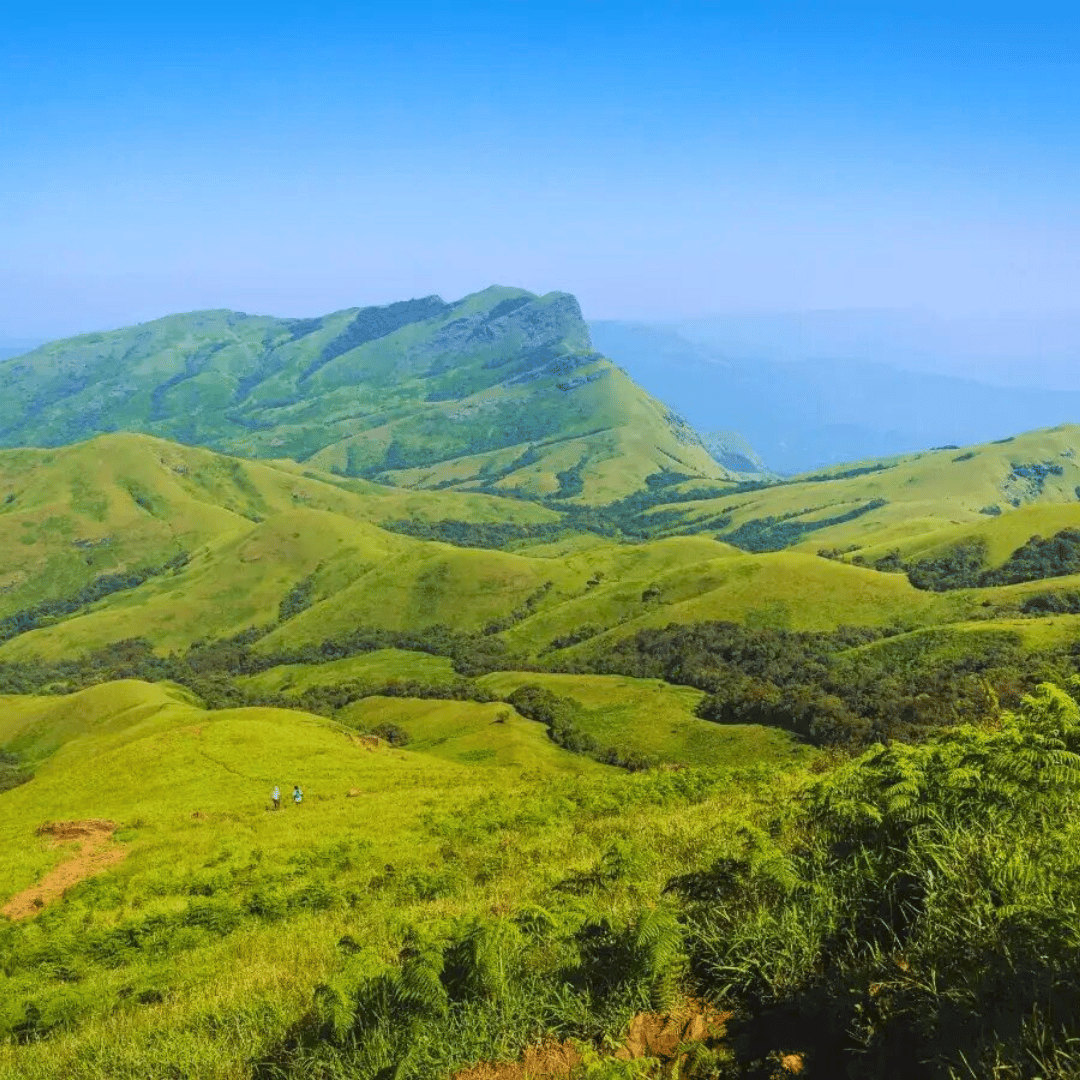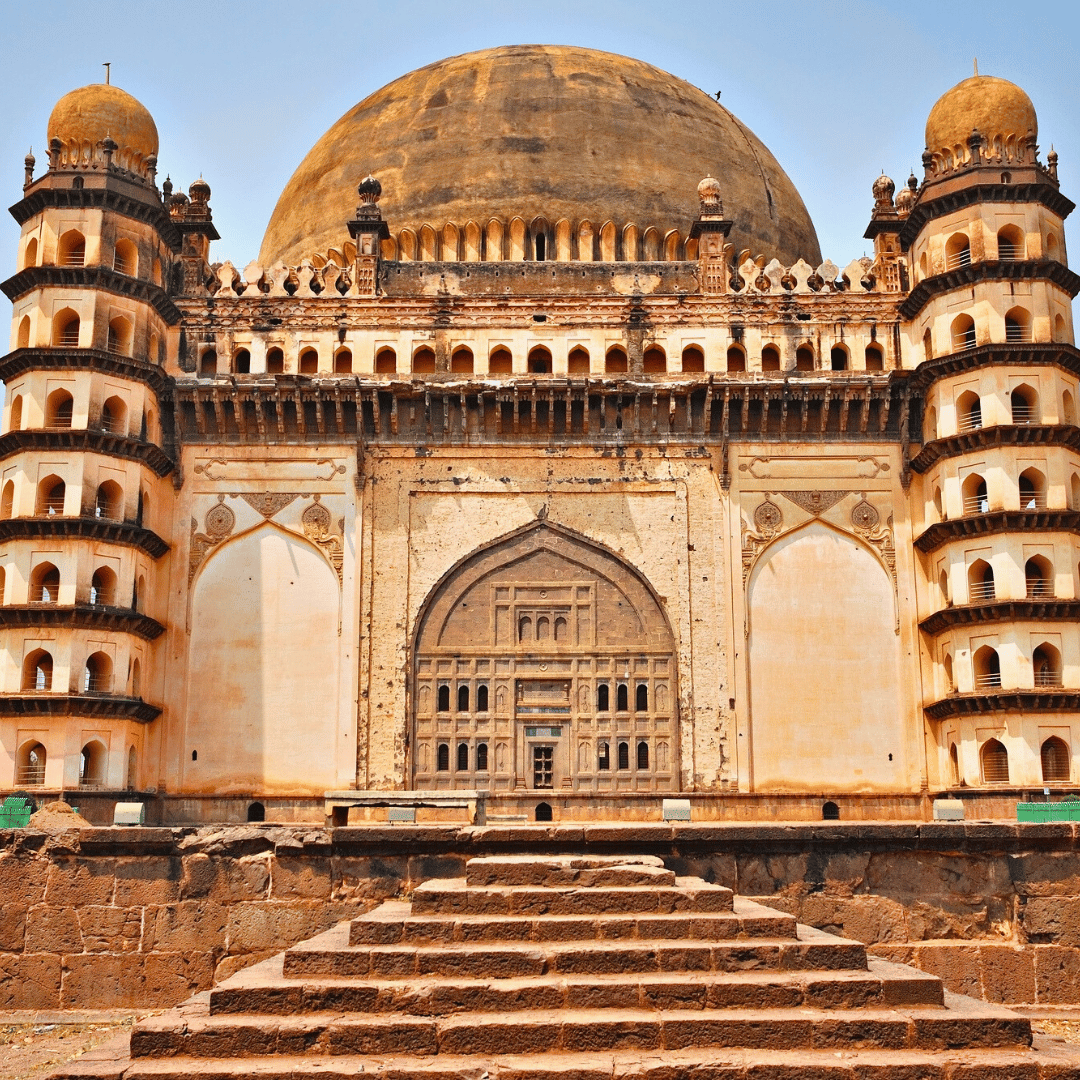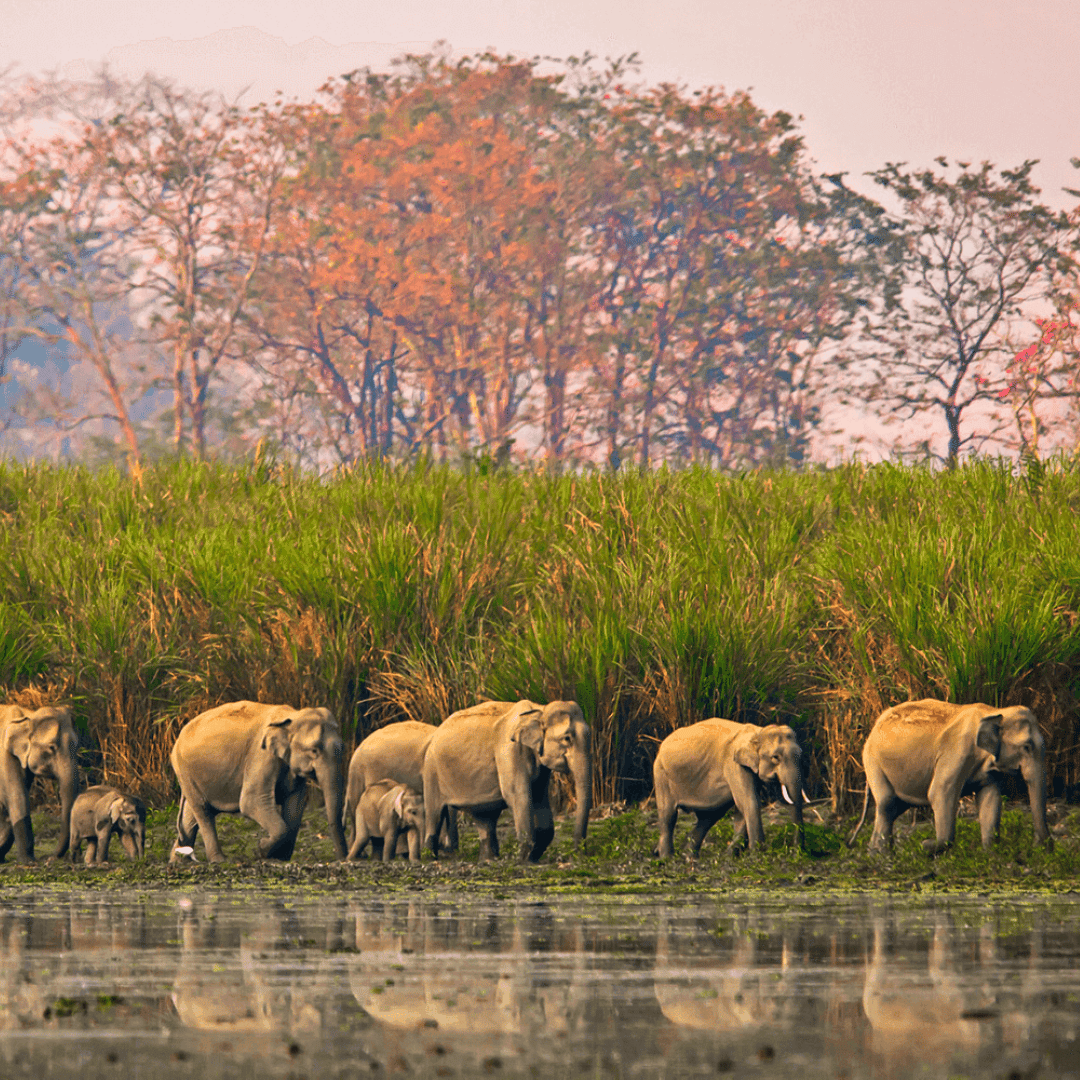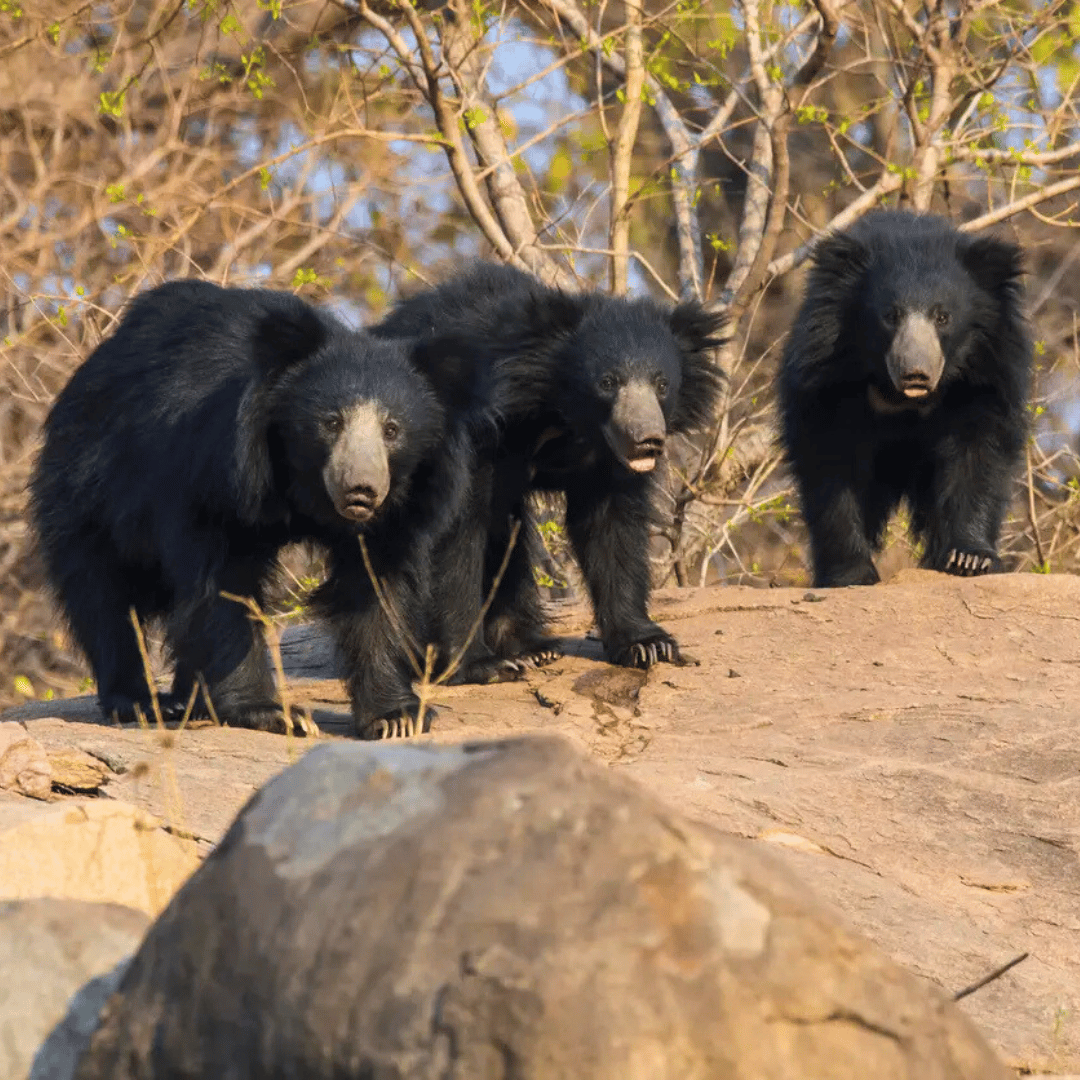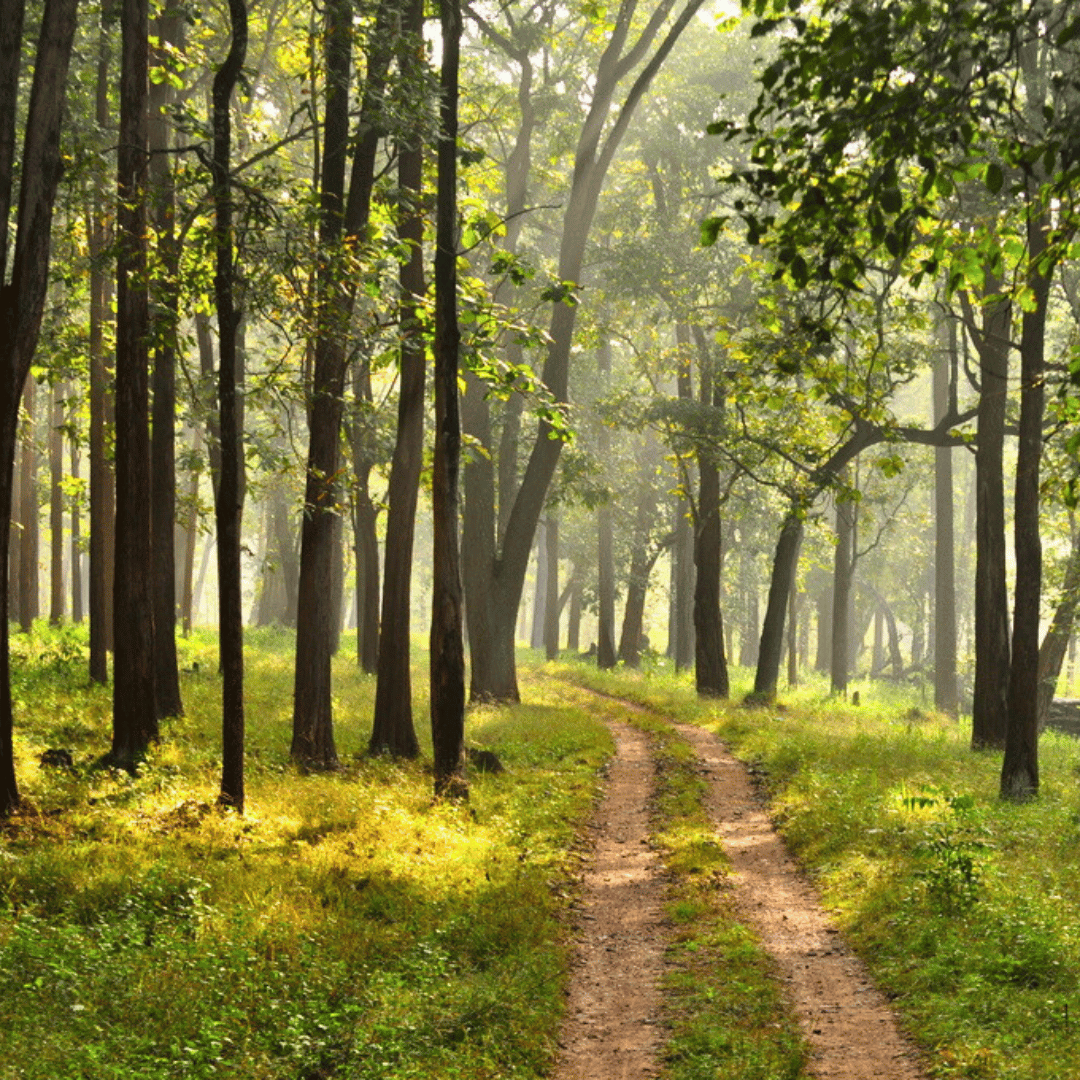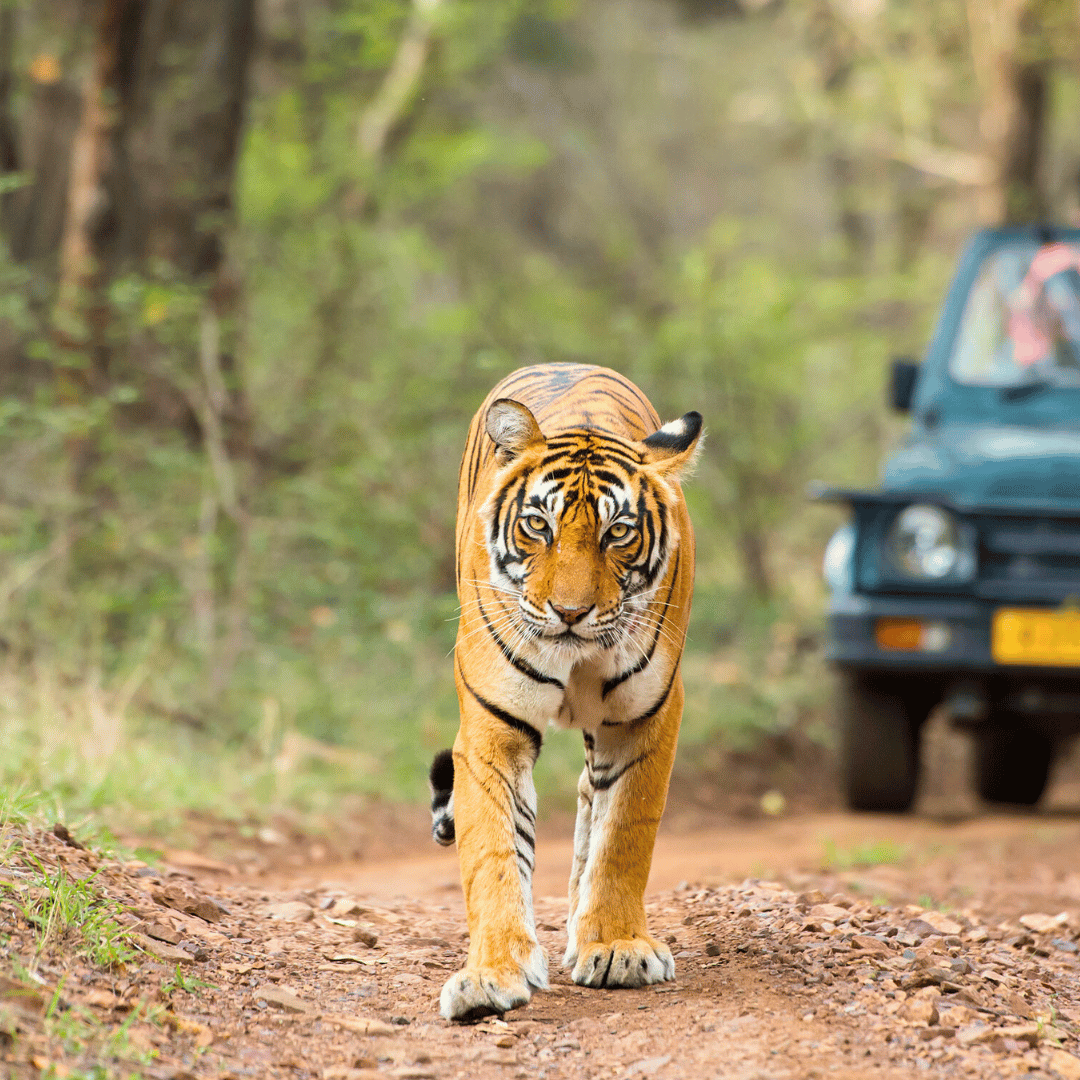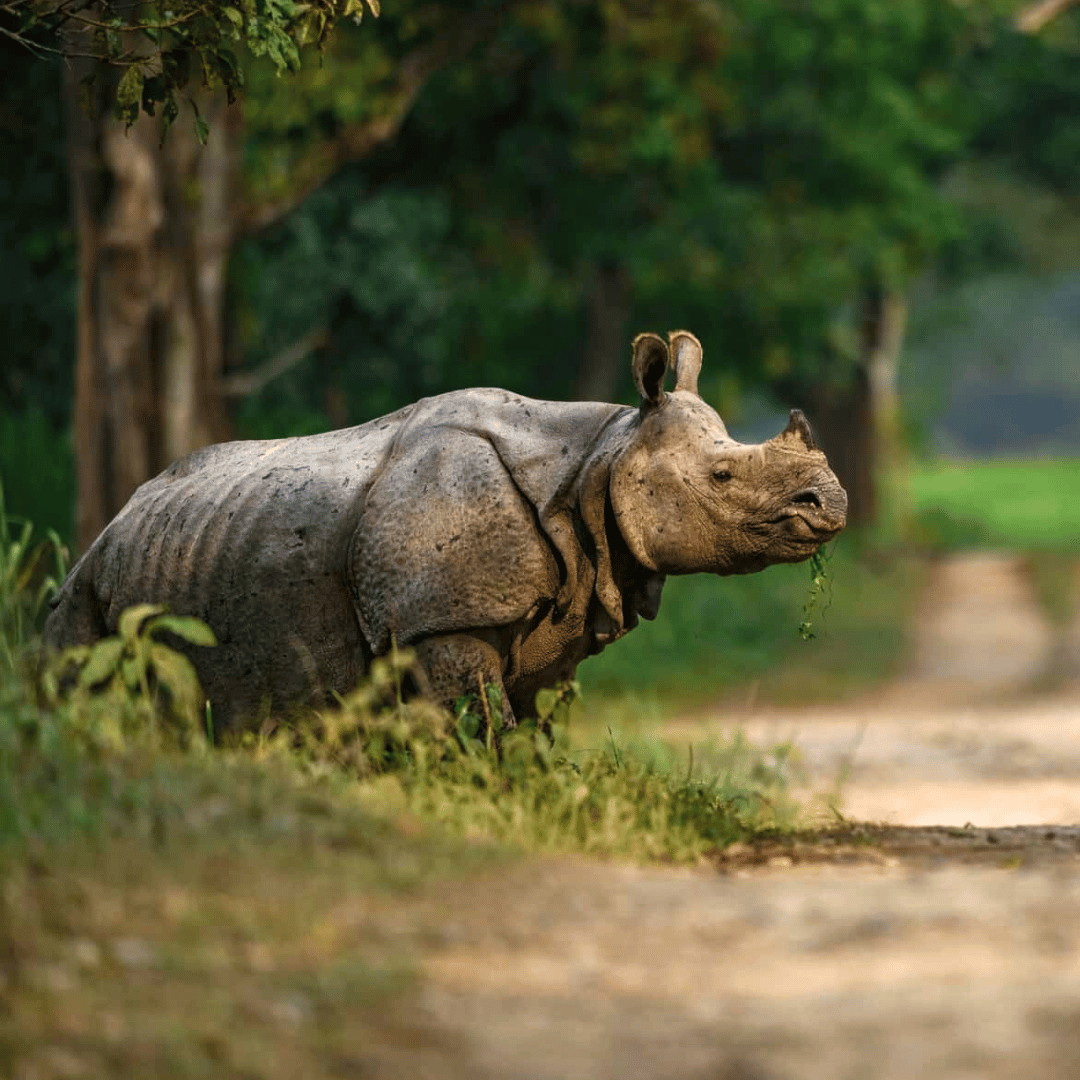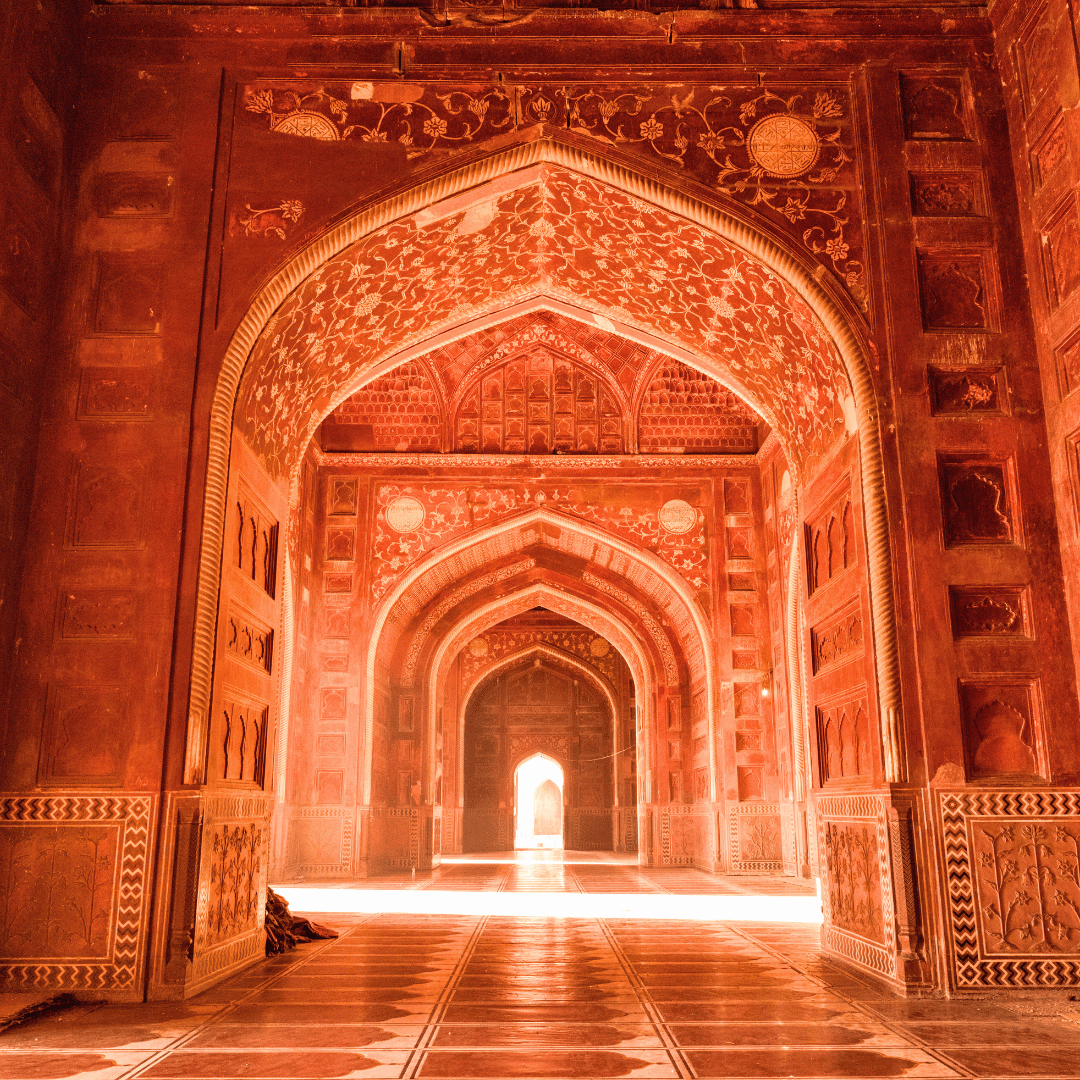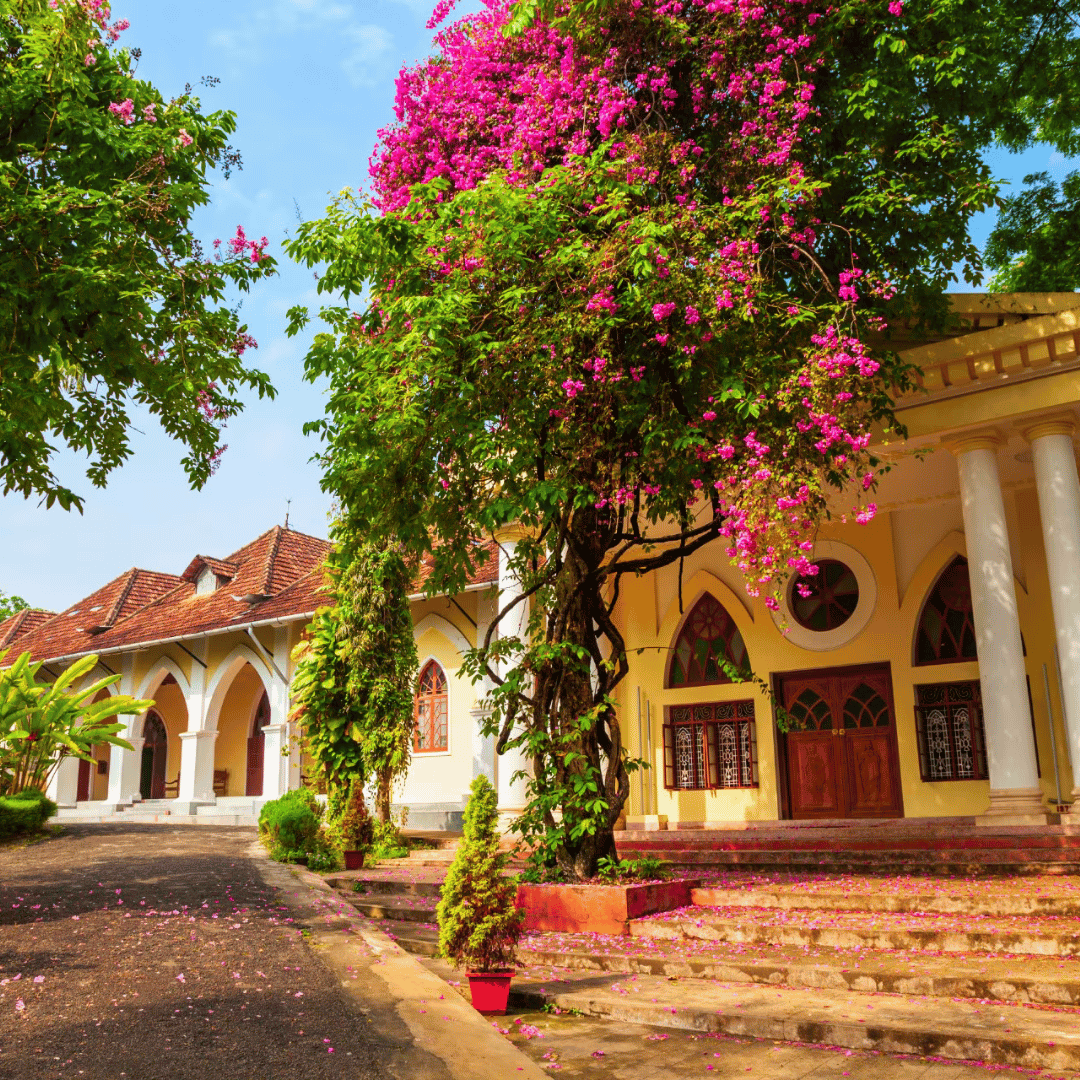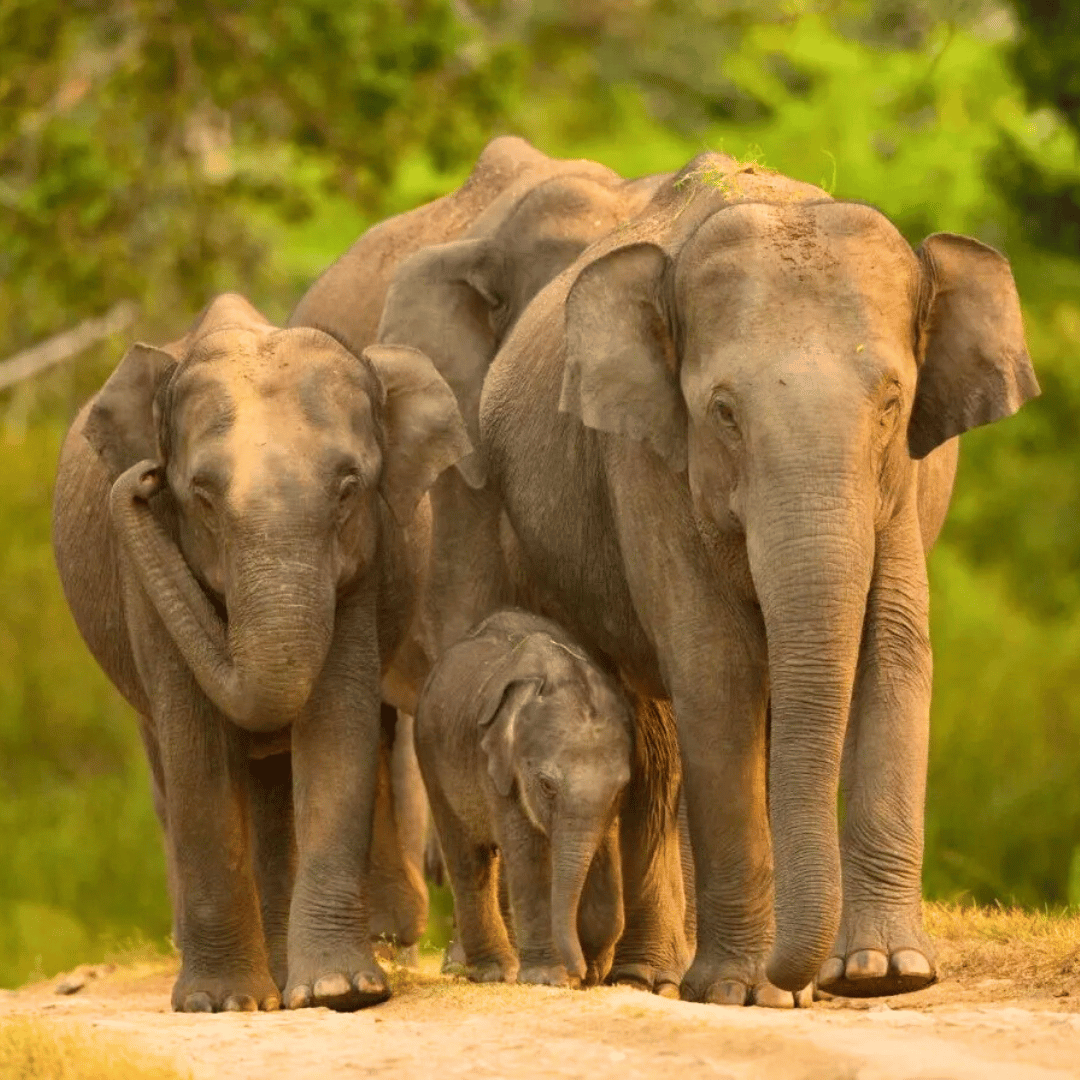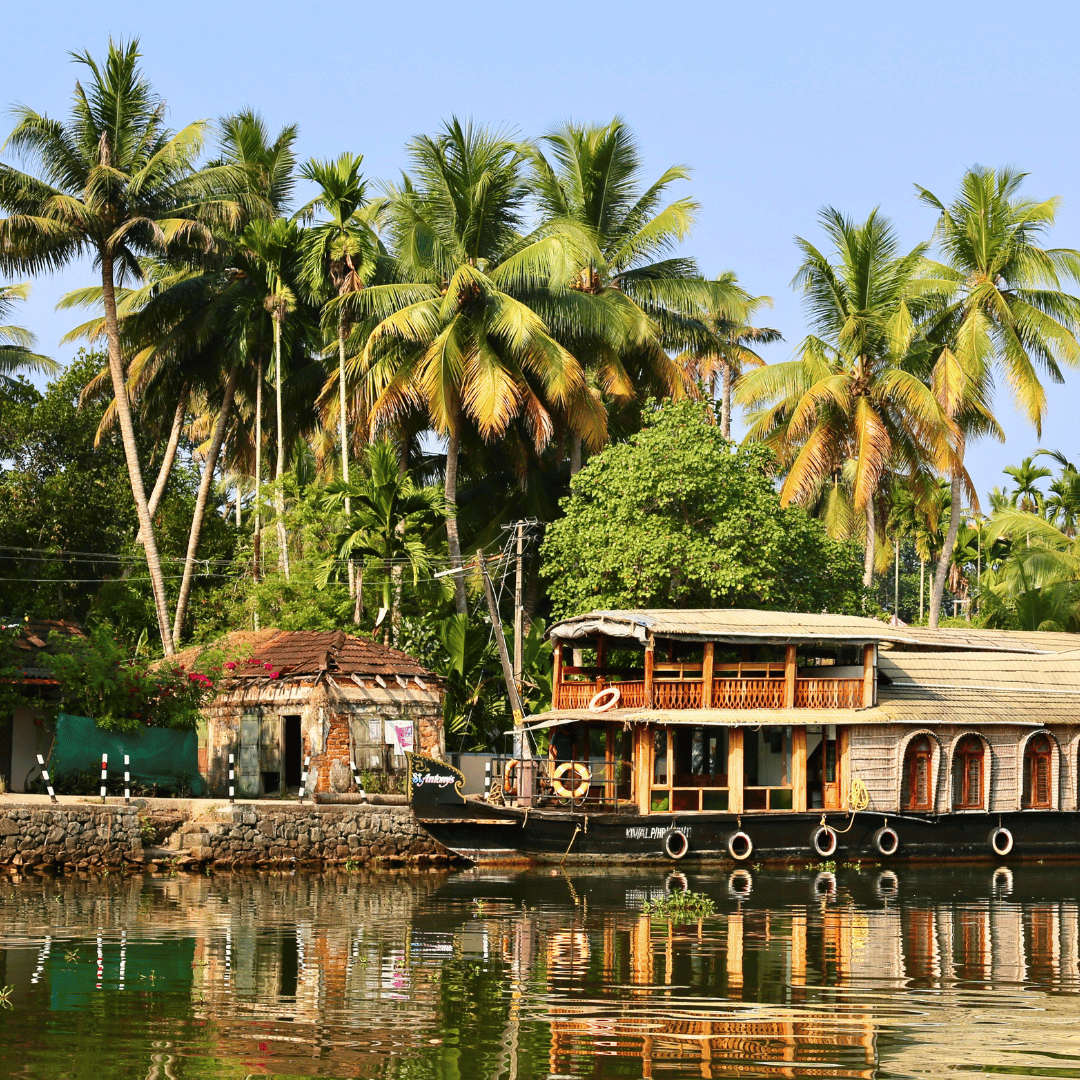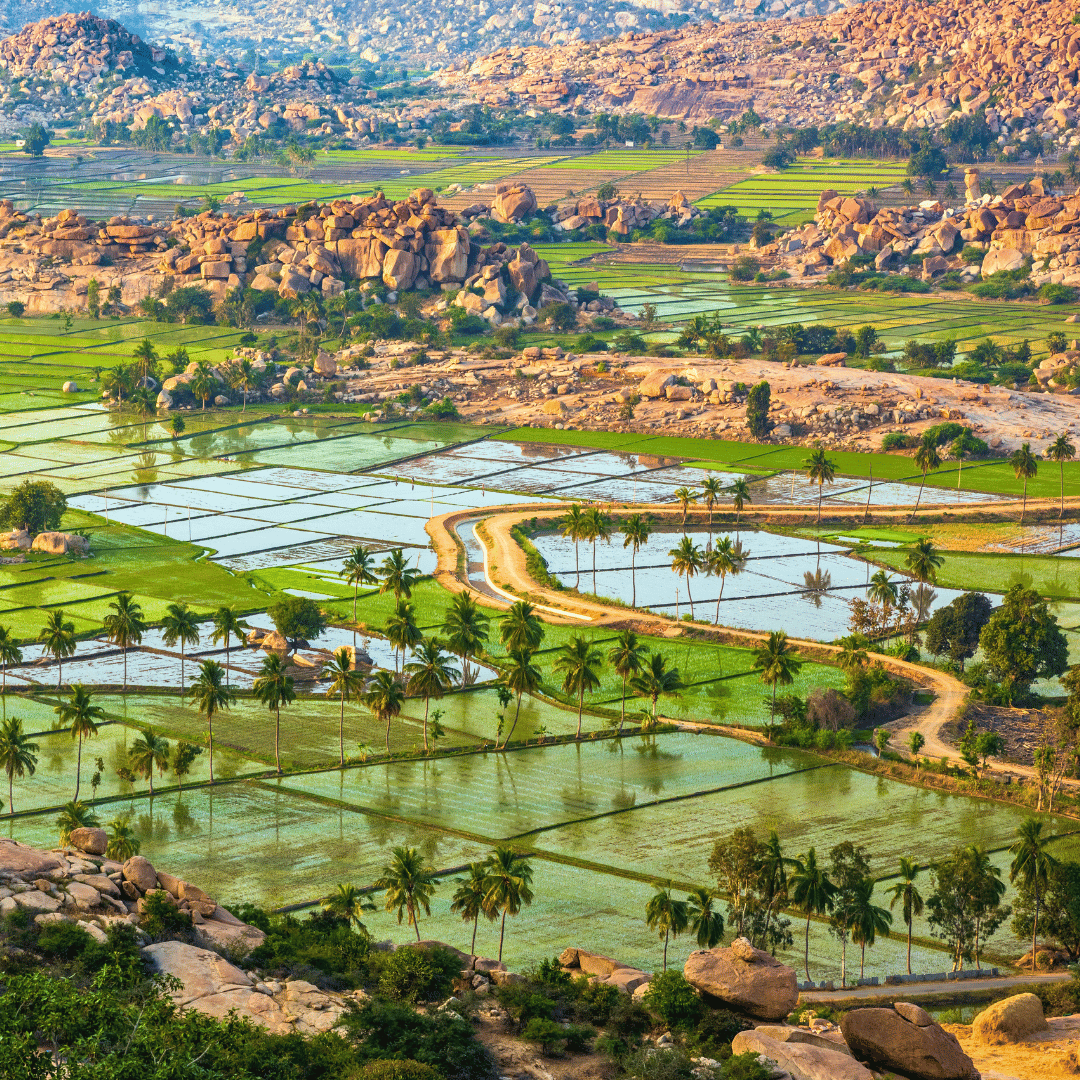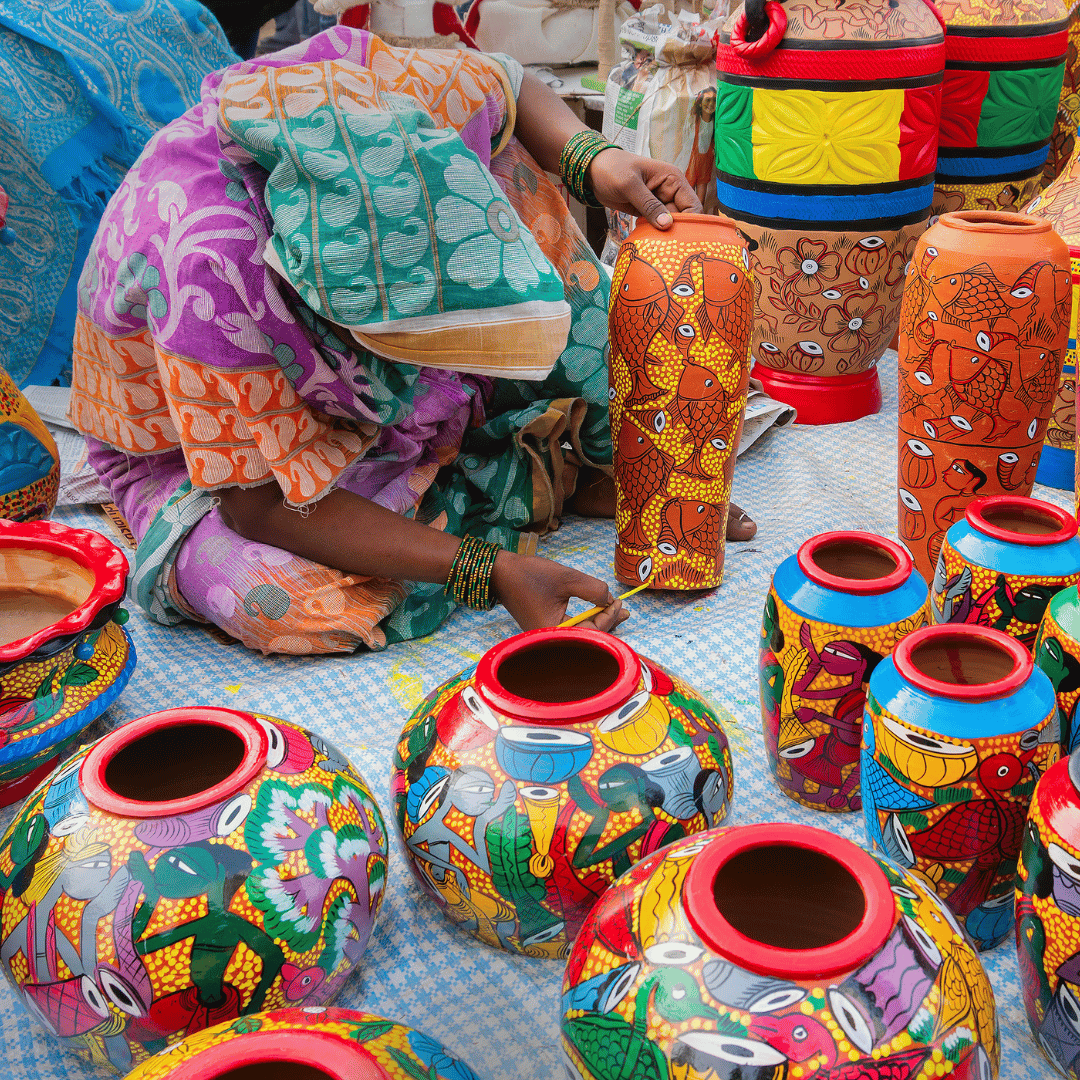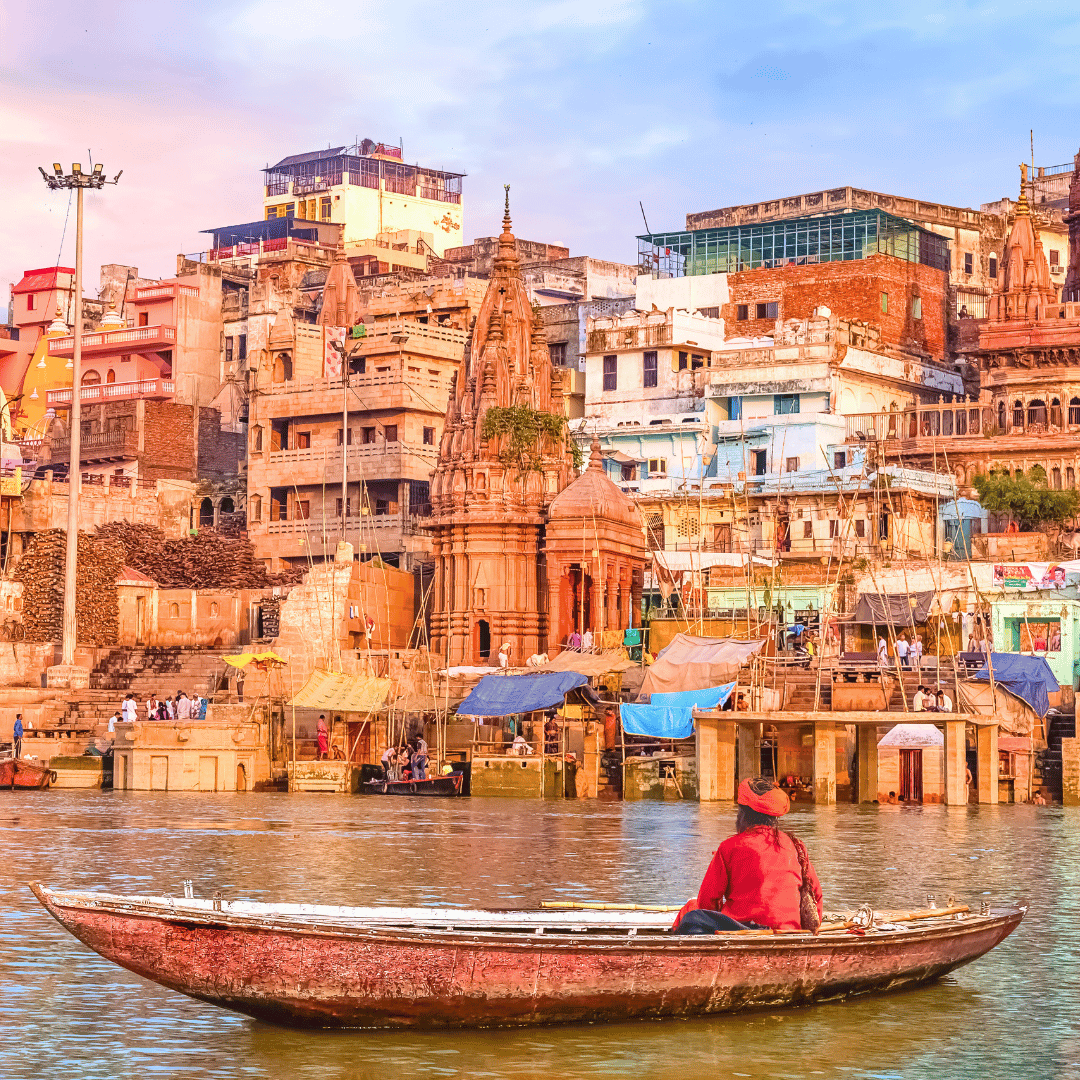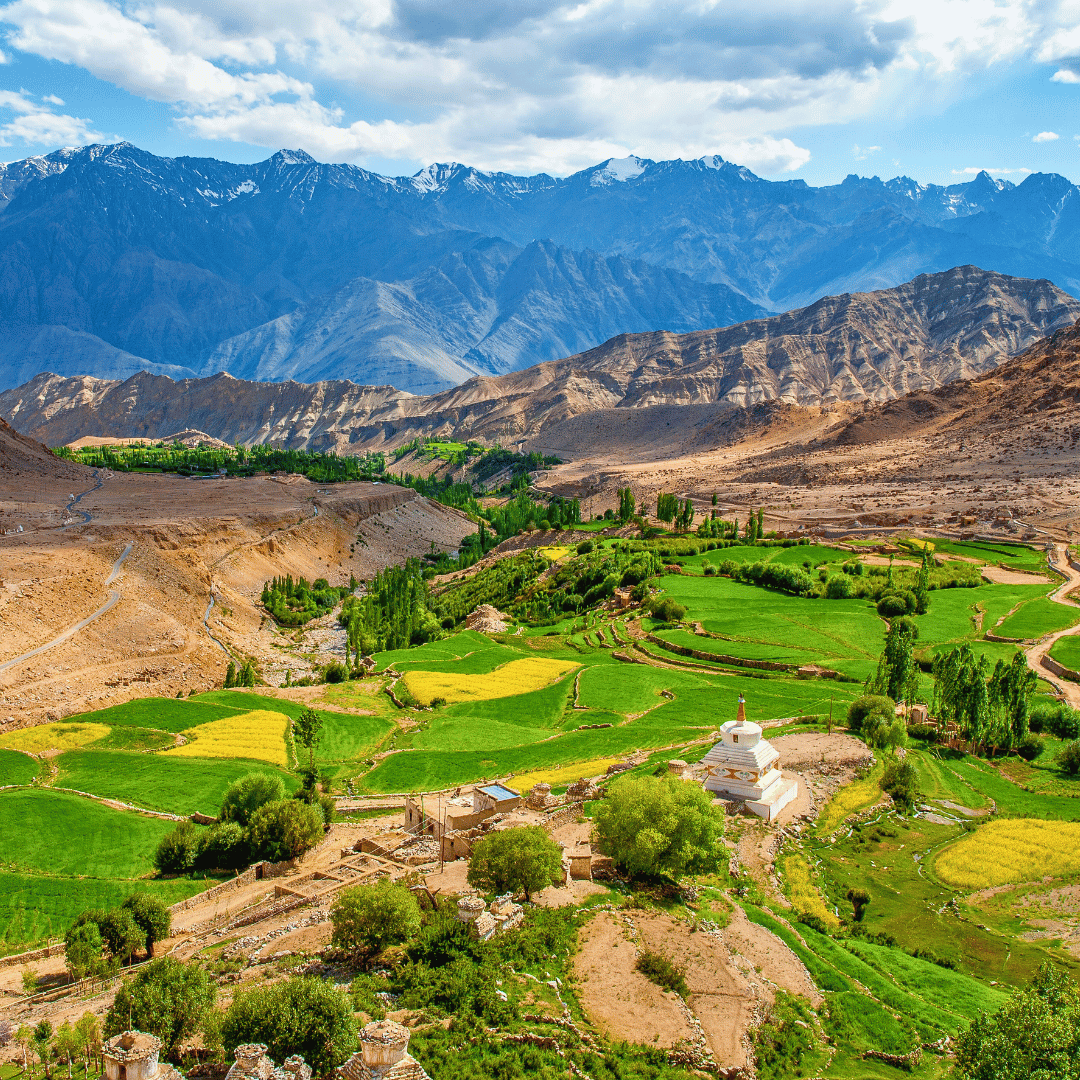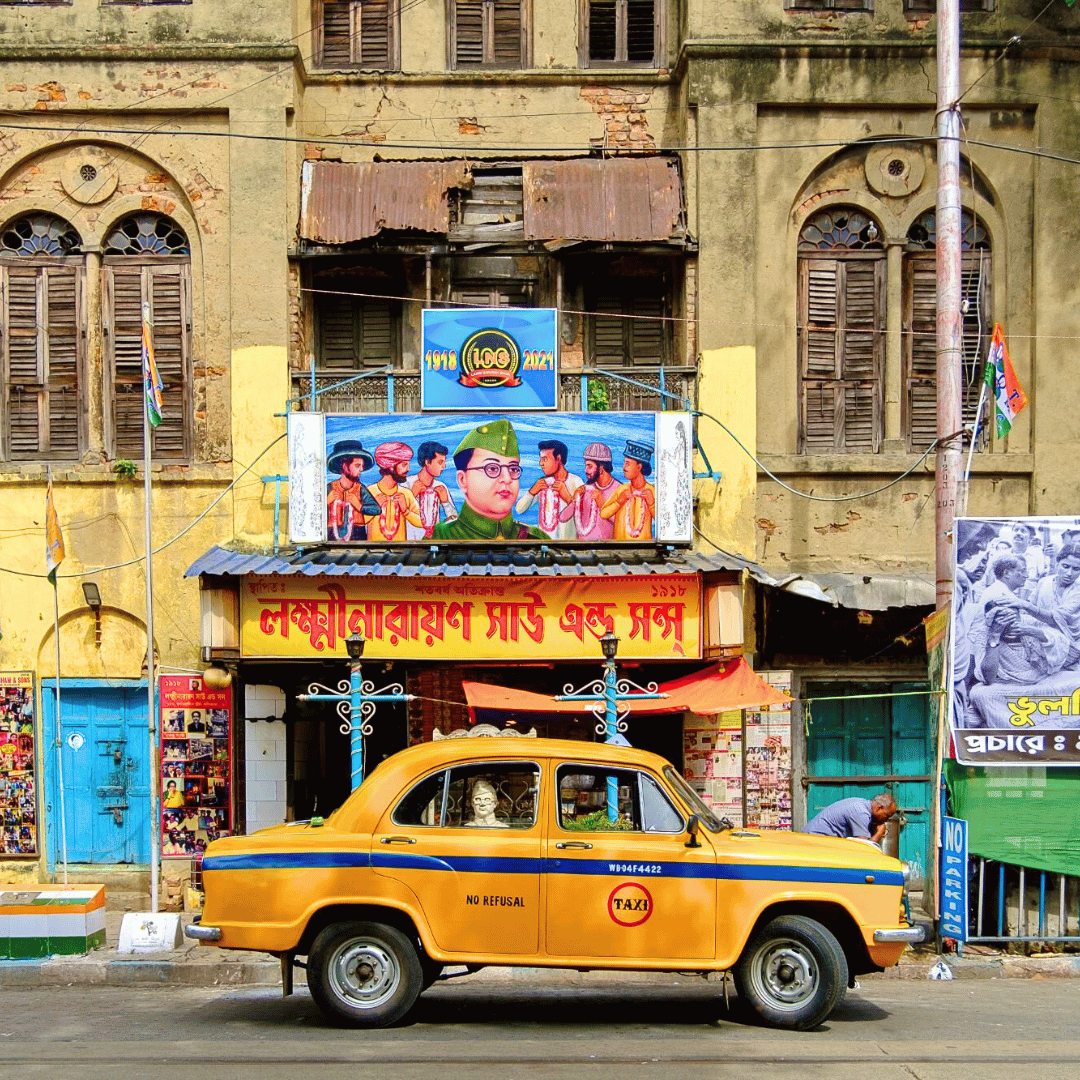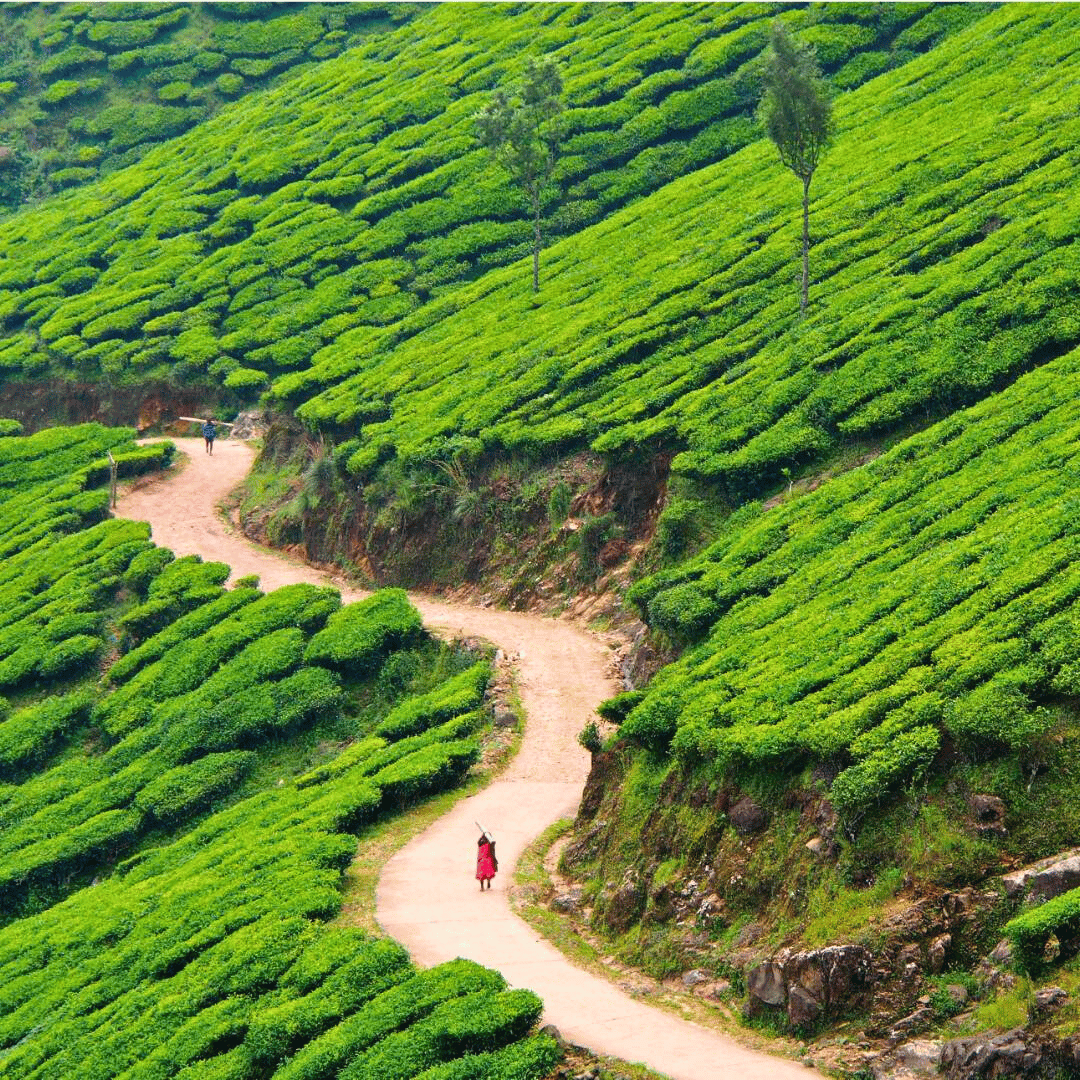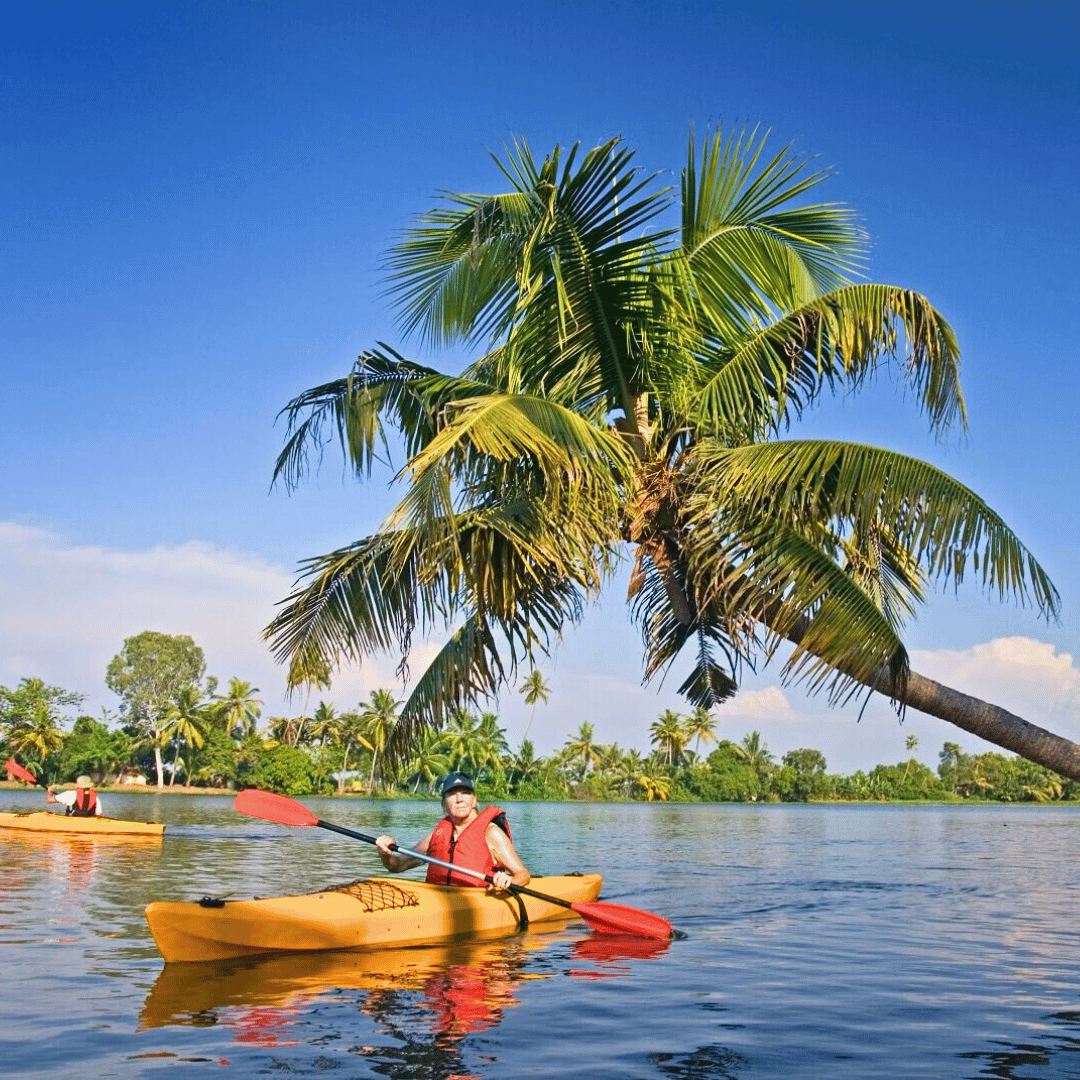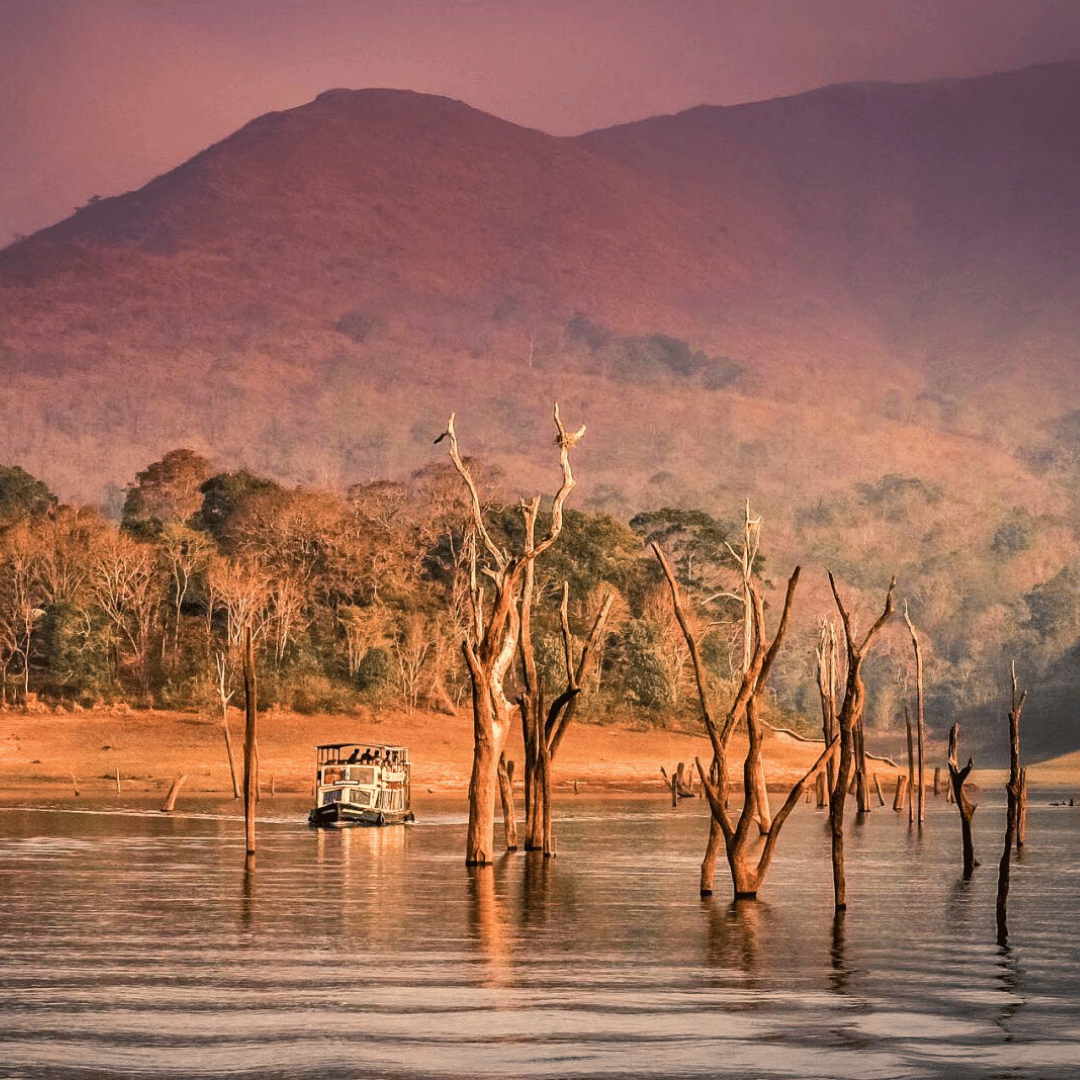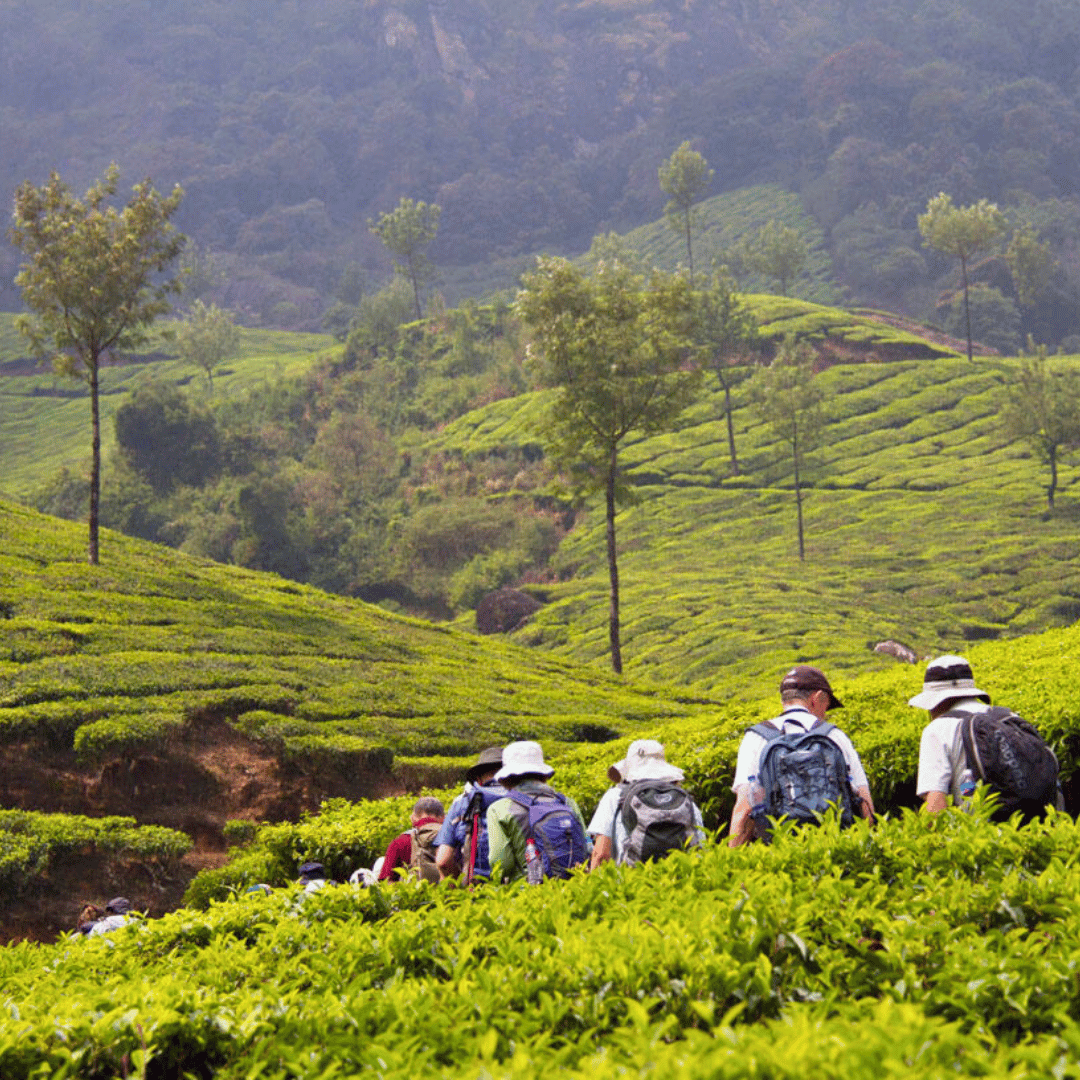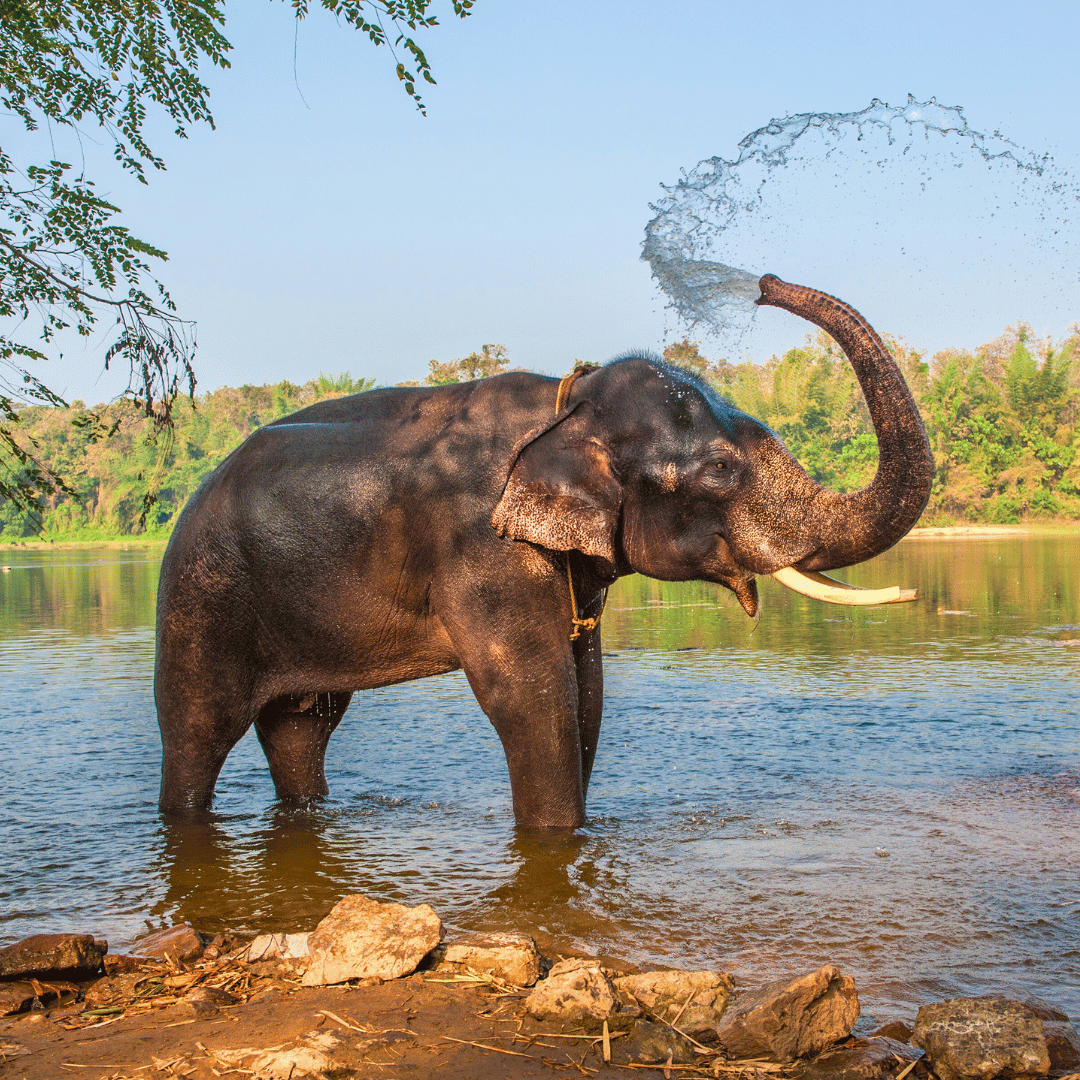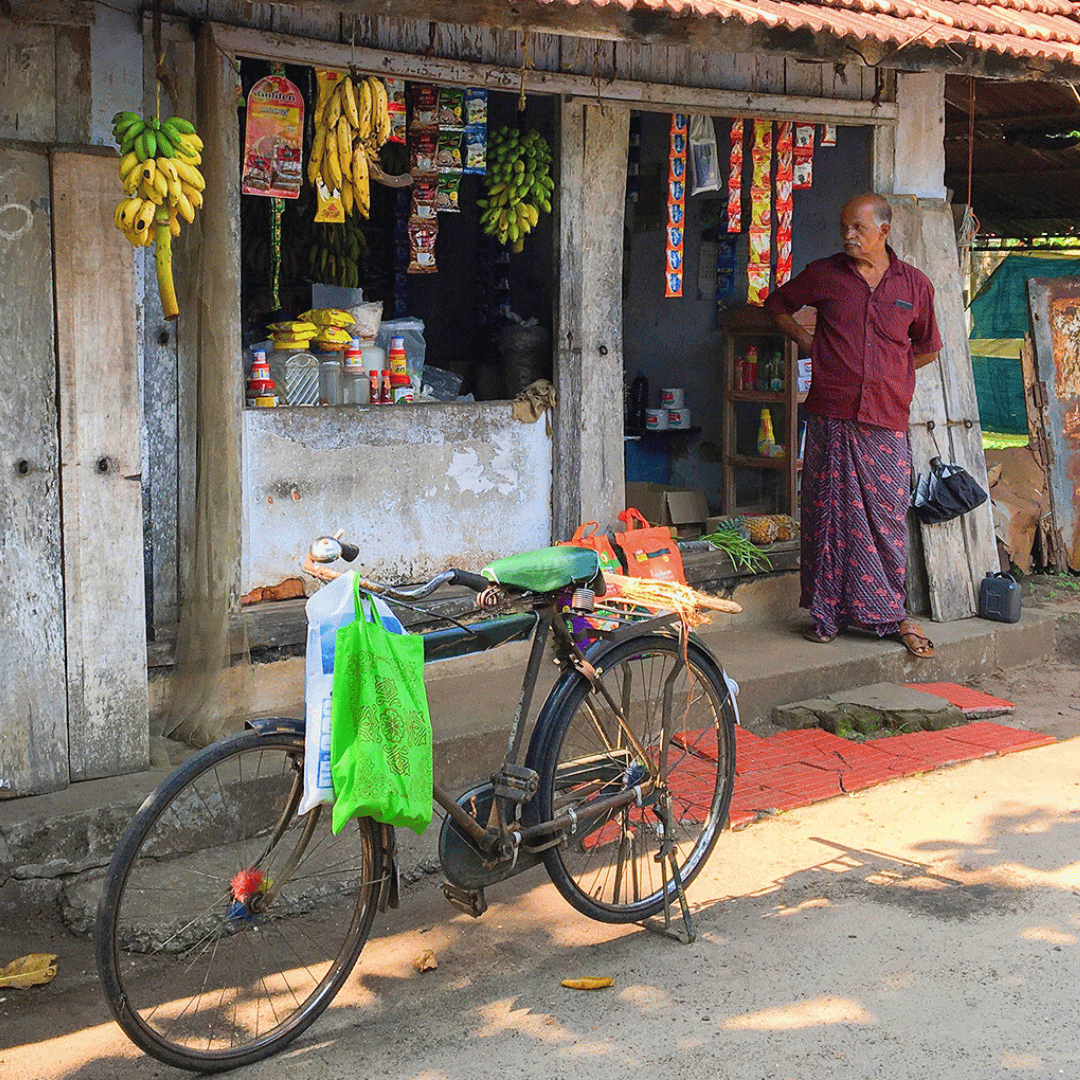Deccan Plateau Itinerary
-
Welcome to India! You will be met on arrival at the airport, and transferred to your hotel for an overnight stay. A significant centre of Indian Muslim culture, Hyderabad, known as the "City of Pearls," is a city of history, grandeur, and immense wealth. Once one of India’s most prosperous princely states, Hyderabad built its fortune on the flourishing trade of pearls, gold, and diamonds, cementing its status as a hub of luxury and commerce.
Founded in 1590 by Muhammad Quli Qutb Shah, Hyderabad was ruled by the Qutb Shahi dynasty for nearly a century before being captured by the Mughals. In 1724, Mughal viceroy Asif Jah I declared his independence and established his own dynasty, later known as the Nizams of Hyderabad. Both the Qutb Shahis and the Nizams were strong patrons of art and literature, shaping the city into a cultural hub.
Following the decline of the Mughal Empire in Delhi in 1857, Hyderabad became one of India’s leading centres of culture, attracting artists from across the subcontinent. This influx led to a blending of North and South Indian languages, traditions, and religions, fostering a unique coexistence of Hindu and Muslim influences that continues to define the city today.
-
Begin your exploration of Hyderabad today with visits to Golconda Fort, Charminar, Laad Bazaar and the Salar Jung Museum.
Before Hyderabad was founded, the Qutb Shahi kings ruled from Golconda, a massive fortress city that rises 122 metres above the plains, 11km to the west. Constructed from large blocks of local granite, some weighing over a tonne, the fort features 87 semicircular bastions, some still retaining their original armaments, along with eight gates, a citadel, and numerous mosques, tombs and pavilions. While many structures have suffered from past sieges and the passage of time, the remains of the royal palaces are particularly striking. Some stand two or three storeys high and once featured gardens with fountains, Turkish baths and mirror-tiled dressing rooms. Enough remains to give a strong sense of the fort’s original scale and grandeur.
In the heart of the walled city stands the Charminar, one of Hyderabad’s most recognised landmarks. Built in 1591, this monument consists of four grand arches and four 54-metre-high minarets, with the city’s oldest mosque located on its top floor.
From Charminar, take a walking tour through Laad Bazaar, a lively market that has been a centre for bridal accessories for centuries. Its narrow lanes are lined with shops selling bangles, bidri ware (ornamental metalwork inlaid with silver), and pearls, offering a quintessential Hyderabad experience.
End the day at the Salar Jung Museum, India’s third-largest museum, home to an eclectic collection of over 40,000 objects once belonging to Salar Jung III, Prime Minister of Hyderabad from 1899 to 1949. The museum’s exhibits include antiques, rare artworks, miniature paintings, and an array of decorative treasures.
-
Today’s journey takes you on a six-hour drive to Gulbarga, with a stop in the historic city of Bidar along the way. Perched on the northern edge of the Deccan Plateau, this small yet historically significant town served as the capital of the Bahmani Kingdom from 1428 before becoming the seat of the Barid Shahi dynasty. Bidar’s strategic location and rich history have left behind an impressive array of monuments that offer insight into the region’s medieval past.
The old walled town of Bidar is home to numerous mosques, havelis, and khanqahs - religious complexes established by Muslim rulers for cleric-mystics and their disciples. One of the most striking structures is Mahmud Gawan’s Madrasa. Built in the 15th century by the Persian scholar and prime minister Mahmud Gawan, this grand Islamic college once stood as a centre of learning, attracting scholars from across the Islamic world. Though time and conflict have left it in ruins, its imposing arched façade still retains remnants of its intricate glazed tilework, offering a glimpse of the vibrant decoration that once covered much of its exterior.
A highlight of Bidar is its imposing fort, an architectural marvel built on the edge of a plateau and surrounded by a deep triple moat. Originally constructed in the 8th century and later expanded by the Bahmani rulers, the fort contains a fascinating mix of structures, including assembly halls, baths, zenanas (women’s quarters), and ornately designed palaces. Among these, the Rangin Mahal (‘Coloured Palace’) stands out for its remarkable interior, which features exquisite woodwork, elaborate stucco decoration, and some of the finest surviving Islamic art in the Deccan.
Just outside the fort, the Bahmani and Barid Shahi tombs add to the city’s historical landscape. The Bahmani tombs, with their large white domes and intricate geometric tilework, reflect Persian influences in Deccan architecture. The Barid Shahi tombs, smaller yet equally striking, are adorned with Persian inscriptions and remnants of decorative elements that hint at their former grandeur.
After exploring Bidar, continue your journey towards Gulbarga, driving through the dry yet scenic landscapes of northern Karnataka. Arriving in the early evening, settle into your accommodation and take in the city’s atmospheric surroundings, ready to explore its historic sites the following day.
-
Spend the day exploring Gulbarga, a city shaped by both Hindu and Islamic influences. Once a thriving Hindu settlement, it became the Bahmani capital in 1347 under Bahman Shah, who transformed it with grand palaces, mosques, and bustling bazaars. Successive rulers expanded the city, but its political significance waned after the capital shifted to Bidar in 1428.
Gulbarga Fort, a striking blend of Persian, Turkish, and Indian styles, dominates the city’s historical landscape. Within its walls stands the Jama Masjid, a rare architectural gem believed to be modelled on the Great Mosque of Córdoba. Built in the late 14th or early 15th century, it is unique in India, with a vast dome covering the prayer hall and smaller domes creating a light-filled interior. Unlike most Indian mosques, it is entirely enclosed, setting it apart from traditional designs.
The city is also home to the imposing tombs of Bahmani rulers, showcasing Persian-influenced architecture with massive domes and intricate stucco work. Gulbarga’s spiritual significance is reflected in two important shrines: the dargah of Sufi saint Khwaja Syed Mohammed Gesu, a site of pilgrimage and devotion, and the shrine of Saint Sharana Basaveshwara, a Hindu philosopher who preached social and religious equality.
As you explore, Gulbarga’s streets and monuments reveal a city where diverse traditions merged, leaving behind an enduring cultural and architectural legacy.
-
Today begins with a 3.5-hour drive to Bijapur, often referred to as the ‘Agra of South India’. This historic city traces its origins to the Chalukyan Dynasty of Kalyani, which laid its foundation between the 10th and 11th centuries. However, Bijapur truly flourished under the rule of the Adil Shahi dynasty (15th-17th centuries), which transformed it into a centre of architectural brilliance. The city remains filled with remarkable monuments, including mosques, mausoleums, palaces, and fortifications, many of which stand in various states of preservation. Despite the passage of time, Bijapur retains a distinct character, with its strong Islamic influences evident in its culture and architecture.
Much like Agra, Bijapur is home to an iconic mausoleum - Gol Gumbaz (‘Round Dome’), the final resting place of Mohammed Adil Shah (1627-56), the seventh ruler of the dynasty. Set within a formal garden, this colossal structure features one of the world’s largest domes, second only to St Peter’s Basilica in Rome. Measuring over 44 metres in diameter, the dome is a marvel of engineering, supported without pillars and dominating the city’s skyline. Inside, the whispering gallery beneath the dome is an acoustic wonder, where even the softest sound travels across the vast space with remarkable clarity.
In contrast to the grandeur of Gol Gumbaz is the refined elegance of the Ibrahim Rauza Mausoleum, the tomb of Ibrahim Adil Shah II (1580-1626). Often compared to the Taj Mahal for its symmetry and intricate detailing, this graceful complex consists of a beautifully carved mosque and a tomb standing on a raised platform, surrounded by finely sculpted arches and delicate Koranic inscriptions. The exquisite craftsmanship of its decorative stonework makes it one of the most aesthetically pleasing monuments of the Deccan.
Among Bijapur’s other significant sites is the Jami Masjid, regarded as one of the finest mosques in India. Built by Ali Adil Shah I in the 16th century, its expansive prayer hall, supported by massive pillars, features a magnificent domed roof and an intricately carved mihrab (prayer niche). Its vast courtyard can accommodate thousands of worshippers, reflecting the scale and ambition of its builders.
Another highlight is the Mithri Mahal, a striking three-storey palace known for its ornate projecting windows and slender minarets. This beautifully proportioned structure, believed to have been a pleasure pavilion, offers a glimpse into the lifestyle of the Adil Shahi rulers.
As you explore Bijapur, its blend of architectural grandeur and historical depth provides an insight into the rich legacy of the Adil Shahis, who left behind a city of monumental beauty and cultural significance.
-
After breakfast, begin a 2.5-hour drive to Badami, the former capital of the early Chalukya dynasty, which ruled much of the central Deccan between the 4th and 8th centuries. Nestled at the mouth of a rugged ravine between two steep, rocky hills, Badami is renowned for its rock-cut cave temples and early Dravidian-style architecture. Along with nearby Pattadakal and Aihole, it forms a key part of Karnataka’s temple heritage, showcasing some of the finest examples of early Hindu and Jain temple art. These sites played a crucial role in shaping the architectural styles that later flourished under the Vijayanagara and Hoysala empires.
Badami is best known for its magnificent 6th-century cave temples, which overlook the serene Bhuthanatha Lake. Carved into the red sandstone cliffs, these four rock-cut temples are dedicated to Hindu and Jain deities, with two devoted to Lord Vishnu, one to Lord Shiva, and the fourth to the Jain Tirthankaras. The most striking sculpture among them is the 18-armed depiction of Lord Shiva performing 81 different dance poses, a masterpiece of early Indian rock art. The carvings in these caves, with their intricate details and fluidity of movement, reflect the artistic sophistication of the Chalukyan period.
Beyond the caves, the Malegitti Shivalaya temple, perched atop the northern hill, stands as an architectural marvel. Constructed entirely of stone without the use of mortar, this early Dravidian-style shrine is dedicated to Lord Shiva and is one of the oldest surviving structural temples in Badami. Its finely sculpted walls, featuring intricate depictions of deities and mythological scenes, highlight the ingenuity of early temple builders.
The town’s historical significance extends beyond its temples, as it was a contested site between the Chalukyas, Pallavas, and later the Rashtrakutas, each leaving behind traces of their influence. The surrounding cliffs, riddled with fortifications and ancient inscriptions, tell stories of battles and conquests that shaped the region. Today, Badami offers not only a glimpse into early Indian temple architecture but also a striking natural landscape, where the interplay of red sandstone cliffs, cave sanctuaries, and the tranquil lake creates a setting that feels almost timeless.
-
From Badami, take a three-hour drive to Hampi, stopping along the way to explore the remarkable sites of Pattadakal and Aihole.
Pattadakal, a UNESCO World Heritage Site, was not only the second capital of the Chalukyas but also the site of their royal coronations between the 7th and 8th centuries. This temple complex showcases a fusion of northern and southern Indian architectural styles, with the most significant structure being the Virupaksha Temple. Its intricately carved pillars depict scenes from the Ramayana and Mahabharata, while its Nandi hallways and inner sanctuaries house polished black stone lingams. The craftsmanship here set the standard for later temple construction across the Deccan.
Aihole, often referred to as the ‘cradle of Indian temple architecture,’ features a remarkable collection of early Hindu temples dating from the Chalukyan and later Rashtrakuta periods (6th to 12th centuries). The largest and most impressive is the Durga Temple, with its semi-circular apse, intricately carved pillars, and sculptural masterpieces. Other significant sites include the Ladkhan Temple, one of the earliest Hindu stone temples, and the Kunti Group, a cluster of four temples distinguished by open columned halls leading to sanctuaries within.
Arrive in Hampi late in the afternoon and enjoy the rest of the day at leisure. The town is set in a striking landscape of rolling hills strewn with massive rounded boulders, with the Tungabhadra River cutting through the centre. The contrast between the ancient ruins and the dramatic natural surroundings makes Hampi one of India’s most compelling historical sites.
-
Spend the day exploring Hampi, the former capital of the Vijayanagara Empire, which once stood as one of the wealthiest cities in the world. Dominating the spice and cotton trade, it was a thriving centre of commerce, art, and culture, renowned for its bustling bazaars filled with precious stones and palaces adorned with gold. Though the empire fell in the late 16th century, leaving much of the city in ruins, Hampi remains one of India’s most extraordinary historical sites. Sprawled across a vast area, its temples, palaces, and monuments reflect the grandeur of its past and continue to be unearthed through ongoing excavations, offering a glimpse into history as it unfolds.
Begin your exploration at the Virupaksha Temple, one of the oldest and most significant sites in Hampi. Dedicated to Lord Shiva, this temple has been a place of continuous worship for over 500 years. Within its towering gopuram (gateway tower), a series of pillared halls and courtyards house smaller shrines, intricate carvings, and fascinating architectural features that have survived centuries of upheaval.
Visit the Vittala Temple, a UNESCO-listed monument and one of Hampi’s most iconic structures. Famous for its intricately sculpted stone chariot, this temple complex is also known for its musical pillars, which emit distinct tones when struck. The artistry of the Vijayanagara period is on full display here, with finely detailed carvings adorning every surface, depicting celestial beings, mythical creatures, and legendary scenes.
Hampi’s architectural brilliance extends beyond its temples. The Hazara Rama Temple, once the royal family’s place of worship, is adorned with detailed bas-reliefs narrating the Ramayana, while the Krishna Temple and Achyutaraya Temple showcase the ornate sculptural style of the period.
Beyond the temples, Hampi’s secular structures are equally fascinating. The Lotus Mahal, an elegant two-storey pavilion with Islamic and Hindu architectural influences, is thought to have been a retreat for the royal women. The Queen’s Bath, with its arched corridors and recessed balconies, offers a glimpse into the luxury of the royal court. Meanwhile, the Elephant Stables, an impressive row of domed chambers, housed the royal elephants and stand as a testament to the empire’s wealth and organisation.
-
Spend another day exploring Hampi, allowing time to fully take in the vast scale and complexity of this once-great city. While the grandeur of its temples and palaces is immediately striking, a second day offers the chance to go beyond the main monuments, uncovering the hidden corners, natural landscapes, and cultural traditions that make Hampi truly remarkable.
Start the day with a sunrise view from Matanga Hill, the highest point in Hampi, offering panoramic vistas over the ruins and the Tungabhadra River. The short but steep climb is well worth the effort, as the early morning light casts a golden hue over the boulder-strewn landscape, creating a breathtaking sight.
Afterwards, explore the Achyutaraya Temple and Courtesan’s Street, an area often overlooked yet rich in history. The grand pillared boulevard, once lined with shops and bustling with traders, leads to the temple, which boasts impressive carvings and an air of solitude, making it an ideal place to appreciate Hampi’s architectural finesse without the crowds.
Visit Anegundi, an ancient settlement on the northern bank of the Tungabhadra River, believed to be even older than Hampi itself. This charming village, with its traditional homes, banana plantations, and tranquil atmosphere, provides a contrast to the grandeur of the main ruins. You can reach Anegundi by taking a coracle boat ride across the river, a unique experience that connects you to Hampi’s traditional way of life.
Continue to Sanapur Lake, a peaceful spot surrounded by dramatic rock formations. While not a historical site, it offers a refreshing change of pace, where you can relax by the water or take a gentle walk along the rocky shores. The lake is also a great place for a coracle ride, giving you a chance to see the boulders and surrounding scenery from a different perspective.
For those interested in mythology, visit the Anjanadri Hill, believed to be the birthplace of Hanuman, the monkey god. A steep climb of over 500 steps leads to a small temple at the summit, where the views rival those from Matanga Hill. Pilgrims often chant Hanuman’s name here, adding to the spiritual atmosphere.
In the afternoon, explore the Underground Shiva Temple, a fascinating structure partially buried beneath the earth. During the monsoon season, the temple’s sanctum often fills with water, creating a mysterious and ethereal effect. Nearby, the Monolithic Bull (Nandi) statue, positioned at the end of the Hampi Bazaar, is another impressive remnant of the Vijayanagara Empire.
As the day winds down, take a sunset walk along the riverside, where you can see local fishermen casting their nets, temple ruins bathed in soft light, and langurs leaping between the rocks. For a final cultural experience, catch a traditional performance of folk music and dance, often held in local guesthouses or cultural centres, offering a glimpse into the vibrant traditions that still thrive in the region.
Spending an extra day in Hampi allows you to see beyond its most famous landmarks, giving you time to absorb its atmosphere, interact with locals, and appreciate the natural beauty that makes it such a unique destination.
-
Today involves a long but scenic 7.5-hour drive to Chikmagalur, a picturesque town nestled in the foothills of the Mullayanagiri Range. Known as the heart of Karnataka’s coffee country, Chikmagalur is famed for its rolling hills, lush coffee plantations, and cool mountain air, making it a perfect retreat after the journey.
On arrival, check into your hotel and spend the rest of the day at leisure. You may choose to unwind at your accommodation, taking in the fresh mountain breeze and the aroma of coffee wafting through the air. If you prefer to stretch your legs, take a gentle stroll through a nearby coffee estate, where you can get a first glimpse of the region’s renowned coffee-growing culture.
For those wanting a relaxed introduction to Chikmagalur, consider a visit to Mahatma Gandhi Park (Rathnagiri Bore), a scenic garden on the town’s outskirts offering panoramic views of the surrounding hills. Alternatively, enjoy a quiet cup of locally brewed coffee at one of the town’s charming cafés, where you can sample fresh beans sourced from nearby plantations.
-
Take a full-day excursion to Belur and Halebid, the former capitals of the Hoysala Empire. Nestled at the edge of the Western Ghats, these temple towns are home to some of the finest examples of Hoysala architecture, often referred to as the ‘Jewel Boxes’ of South Indian temple design due to their intricate craftsmanship and sculptural detail.
In Belur, the highlight is the Chennakeshava Temple, a masterpiece of Hoysala artistry. Built in 1117 by King Vishnuvardhana, this temple stands on a distinctive star-shaped platform, a signature element of Hoysala design. Rising to a height of 30 metres, its impressive gopuram (gateway tower) leads to an interior adorned with exquisitely carved panels depicting stories from the Puranas, Upanishads, Ramayana, and Mahabharata. The temple is still active, with daily puja (prayer rituals) maintaining its status as a living place of worship.
Halebid, once the grand capital of the Hoysalas, is home to some of the finest surviving examples of their architectural brilliance. The Hoysaleswara Temple, dedicated to Lord Shiva, was commissioned by King Vishnuvardhana in 1121 but was never fully completed. What remains is remarkable for its sheer density of sculptural detail. The temple’s outer walls are covered with a continuous sequence of intricate carvings depicting Hindu deities, mythological creatures, celestial maidens (Shilabalikas), animals, and floral patterns, each panel sculpted with astonishing precision.
Nearby, the smaller Kedareswara Temple offers another fine example of Hoysala craftsmanship. Its exterior is adorned with beautiful carvings, including a striking image of Krishna dancing on the serpent demon Kaliya, a rare depiction in stone. Though lesser-known than its grander counterpart, this temple’s intricate details and serene setting make it an equally fascinating stop.
As you explore Belur and Halebid, the delicate stonework and masterful artistry of the Hoysalas become evident, offering a glimpse into a time when these cities were at the height of their power and influence.
-
This morning, embark on a four-hour drive to Mysore, stopping en route at the historic island town of Srirangapatna.
Once the summer capital of Haider Ali and his son Tipu Sultan, the legendary ruler known as the ‘Tiger of Mysore’, Srirangapatna was a formidable stronghold in the 18th century. Although much of the fort was destroyed by the British in 1799 during the decisive battle that ended Tipu Sultan’s reign, several key structures remain. The remnants of the fort’s gates, ramparts, dungeons, and arsenals offer a glimpse into its military past, while the Jama Masjid, built by Tipu Sultan, stands as an elegant example of Indo-Islamic architecture.
A highlight of Srirangapatna is Daria Daulat Bagh, the exquisite summer palace of Tipu Sultan, set amidst well-kept gardens. Built in 1784, the palace is a fine example of Indo-Saracenic architecture, with its entire interior richly decorated with floral motifs, intricate patterns, and murals depicting Tipu Sultan’s battles against the British. The teakwood structure features striking tiger-striped columns, reflecting the Sultan’s personal emblem, and detailed wall paintings that narrate the history of the period.
After exploring Srirangapatna, continue on to Mysore, one of South India’s most well-planned and culturally significant cities. Often referred to as the ‘City of Palaces’, Mysore has a rich royal heritage and a reputation for its elegant architecture, vibrant arts, and thriving markets.
Beyond its grand palaces, Mysore is known for its bustling Devaraja Market, where you can wander through colourful stalls overflowing with fresh produce, flowers, and the city’s famous sandalwood, silk, and spices. This lively marketplace offers an authentic glimpse into local life and is the perfect place to pick up Mysore Pak, a beloved local sweet.
For a peaceful retreat, visit Kukkarahalli Lake, a scenic spot in the heart of the city surrounded by walking trails and frequented by migratory birds. Alternatively, explore Lalitha Mahal, a striking white palace built in 1921 for the royal guests of the Maharaja, now converted into a heritage hotel. The palace’s domes and grand interiors are reminiscent of British colonial architecture, offering a different perspective on Mysore’s royal past.
-
Spend today exploring the sights of Mysore, a city steeped in royal history and architectural splendour.
Begin with a visit to Mysore Palace, the former residence of the Wodeyar dynasty and one of India’s most impressive palatial structures. Designed in an Indo-Saracenic style, the palace combines Hindu, Muslim, Rajput, and Gothic influences, creating a strikingly opulent façade. Inside, its grand halls are adorned with stained glass, intricately carved wooden doors, and vibrant murals depicting scenes from royal life. Among its treasures is a magnificent gold throne, displayed during the annual Dussehra festival, and a silver-carved door that showcases the artistry of the period. The Kalyana Mandapa (Marriage Hall) is particularly stunning, with its domed ceiling, stained-glass skylights, and paintings illustrating the grandeur of the Maharajas.
Beyond the palace, Mysore offers a wealth of cultural and historical attractions. Wander through the Jaganmohan Palace and Art Gallery, which houses an impressive collection of paintings, sculptures, and artefacts, including works by the renowned artist Raja Ravi Varma. A stop at St. Philomena’s Cathedral, one of the tallest churches in India, provides a glimpse into Mysore’s colonial influences, with its soaring spires and Neo-Gothic architecture.
For a deeper connection to Mysore’s heritage, visit the Government Silk Weaving Factory, where artisans produce the city’s famed Mysore silk sarees, known for their lustrous gold borders and intricate designs. Nearby, the Sandalwood Oil Factory offers insight into the traditional methods used to extract the fragrant essence that Mysore is famous for.
Later, take a short drive to Somnathpur, home to the Chennakesava Temple, one of the finest examples of Hoysala architecture. Built in the 13th century, this exquisitely carved temple stands on a star-shaped platform, with its walls covered in intricate sculptures depicting Hindu deities, mythological scenes, and celestial dancers. Unlike many temples in India, Somnathpur’s structure is remarkably well-preserved, providing an unparalleled look at the artistic mastery of the Hoysala era.
End the day with a visit to Chamundi Hill, which offers sweeping views over Mysore and its surrounding countryside. At the summit sits the 2,000-year-old Chamundeshwari Temple, dedicated to the city’s patron goddess, Chamundeshwari, an incarnation of Durga. The temple’s entrance is guarded by an imposing seven-tiered gopuram, and inside, the richly decorated sanctum houses a revered idol of the goddess. On the way up the hill, stop to admire the monolithic Nandi statue, one of the largest in India, intricately carved from a single stone.
As the day winds down, consider a relaxing evening stroll along the illuminated Brindavan Gardens, where the musical fountain show adds a touch of enchantment to Mysore’s royal charm.
-
This morning, take a three-hour drive to Bangalore, often referred to as India’s ‘Garden City’. A dynamic metropolis, Bangalore is known for its tree-lined avenues adorned with cassia, gulmohar, and jacaranda, creating a vibrant and pleasant urban landscape. The city blends the traditional with the modern, featuring stately colonial buildings, lively bazaars, bustling shopping centres, and serene lakes and parks. It is also a major industrial and commercial hub, home to prestigious scientific and research institutions. With its thriving IT sector, Bangalore has earned the reputation of being the Silicon Valley of India. Situated at 1,000 metres above sea level, it enjoys one of the most comfortable year-round climates in the country.
This afternoon, take a tour of Bangalore’s key landmarks, including Tipu Sultan’s Palace, Lalbagh Botanical Gardens, and a drive past the striking Vidhana Soudha.
Dating back to around 1790, Tipu Sultan’s Palace is a finely crafted two-storey wooden structure, built as a summer retreat for the legendary ruler. Tipu Sultan himself called it the ‘Envy of Heaven’, and its ornate balconies, carved pillars, and elegant arches reflect his admiration for Persian and Indo-Islamic architectural styles. Today, the palace houses a museum of memorabilia, offering insight into the life and times of the ‘Tiger of Mysore’.
A visit to Lalbagh Botanical Gardens, one of South Asia’s most diverse botanical parks, provides a glimpse into the city’s rich horticultural heritage. Originally laid out by Haider Ali in 1740, the gardens span 97 hectares and feature an extensive collection of exotic plants, centuries-old trees, and beautifully landscaped pathways. The highlight is the Glass House, modelled on London’s Crystal Palace, which hosts annual horticultural shows and remains one of Bangalore’s most photographed landmarks.
Conclude the tour with a stop at Vidhana Soudha, an imposing neo-Dravidian structure that serves as the seat of Karnataka’s State Legislature and Secretariat. Built in 1956, this grand edifice is constructed from grey granite and porphyry, featuring Rajasthani jharokhas, Indo-Saracenic pillars, and intricate decorative elements, embodying the architectural ambition of post-independence India.
-
We hope you enjoyed your time exploring the Deccan Plateau! This morning, you will be collected from your hotel and taken to the airport for your flight to your onward destination.
The India Unbound Difference
At India Unbound, we’ve spent twenty years on the ground in India, learning all about its intricacies, landscapes and cultures. We use this first-hand knowledge to carefully curate travel itineraries for our guests, and are proud to be a reputable private touring specialist. In addition, our team of local partners offer guarantees of punctuality, quality and service. All of our India private tour itineraries include all accommodation mentioned, daily breakfasts and other meals as specified, all transfers, touring and sightseeing by air-conditioned Toyota Innova or similar vehicle, and internal flights as outlined in the itinerary. Private activities and sightseeing with English-speaking local guides are included, along with entrance fees, drinking water in the vehicle, and all vehicle-related charges such as tolls, parking fees, and taxes. The cost does not include visas or international flights, personal expenses such as drinks and laundry, meals and activities not specifically listed as included, or camera fees, which are rarely applicable. Prices are listed in Australian dollars and are based on per person, twin share. Please note that these may fluctuate depending on the time of year you’re looking to travel, and the type of accommodation you prefer.

